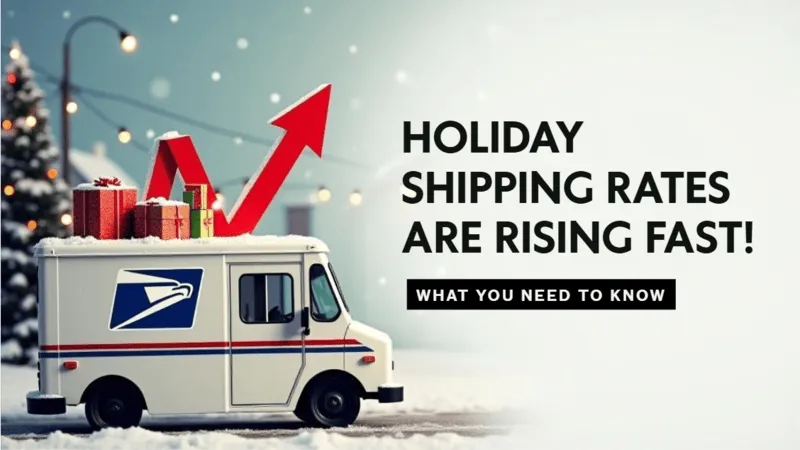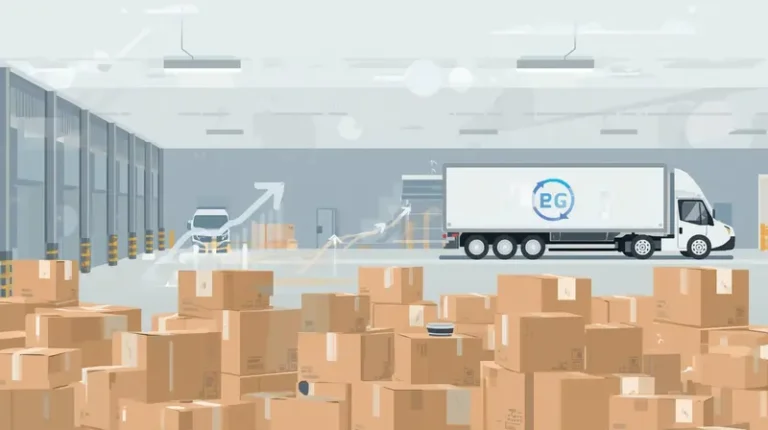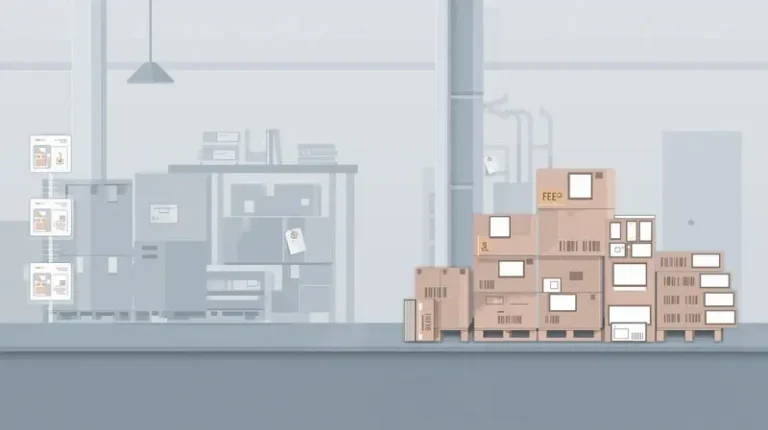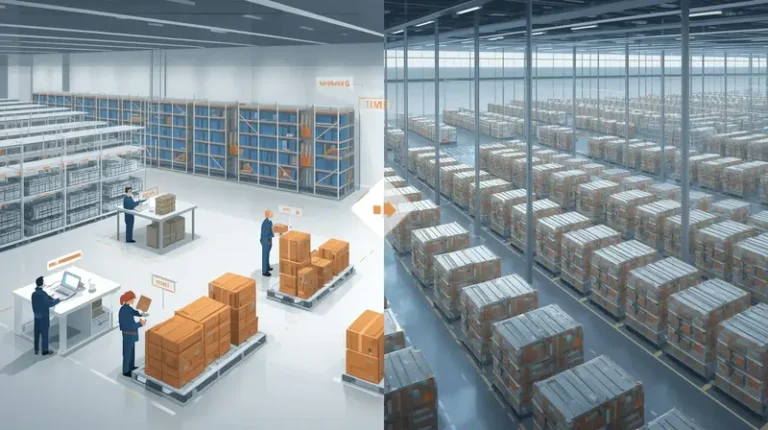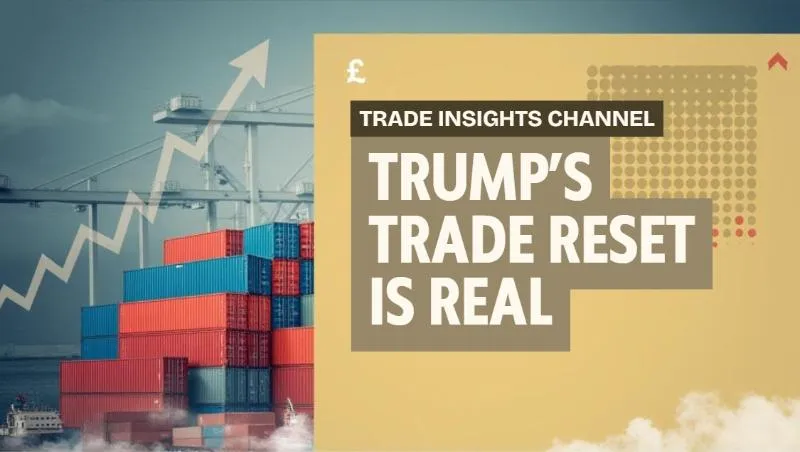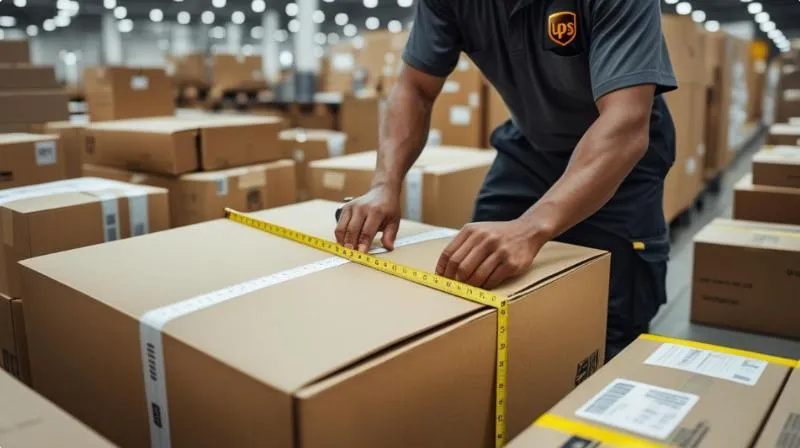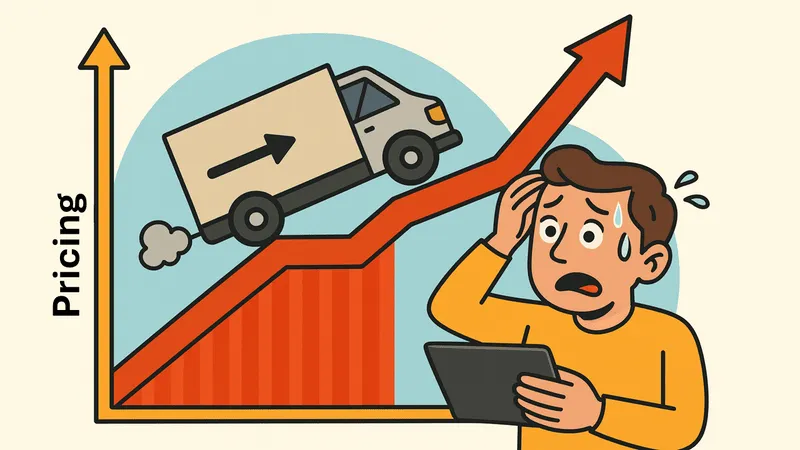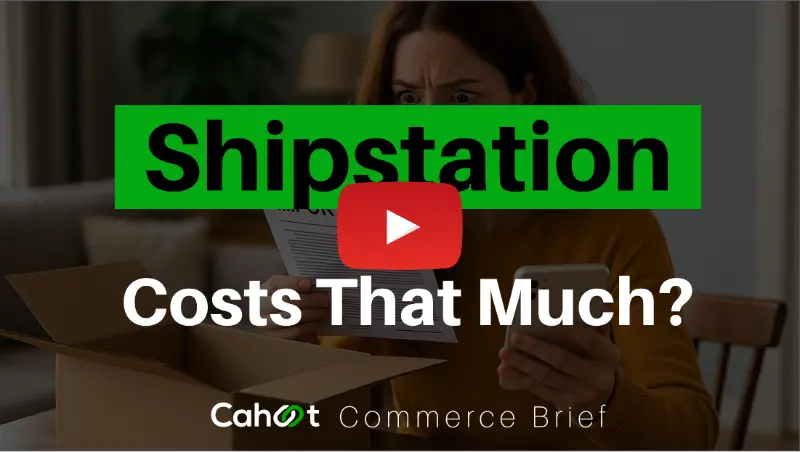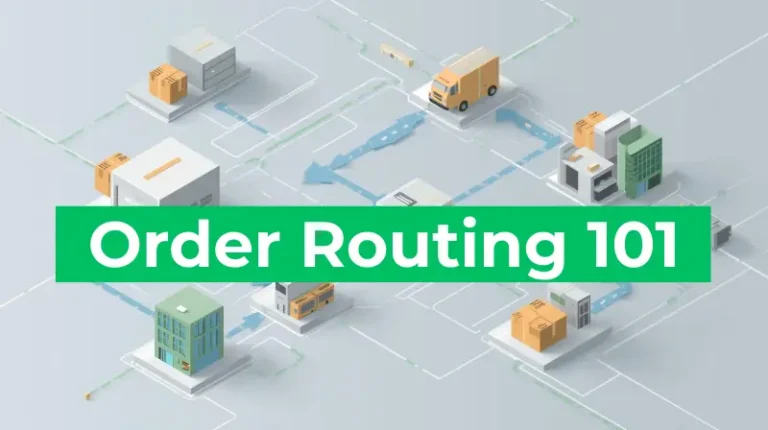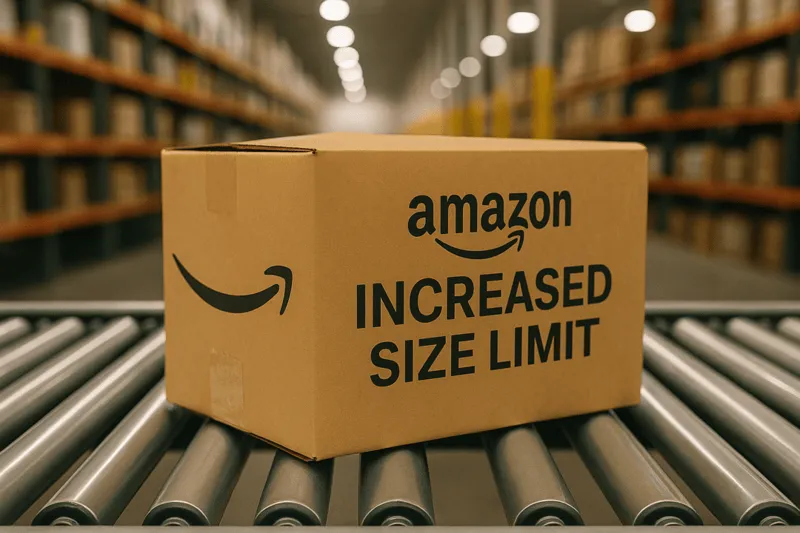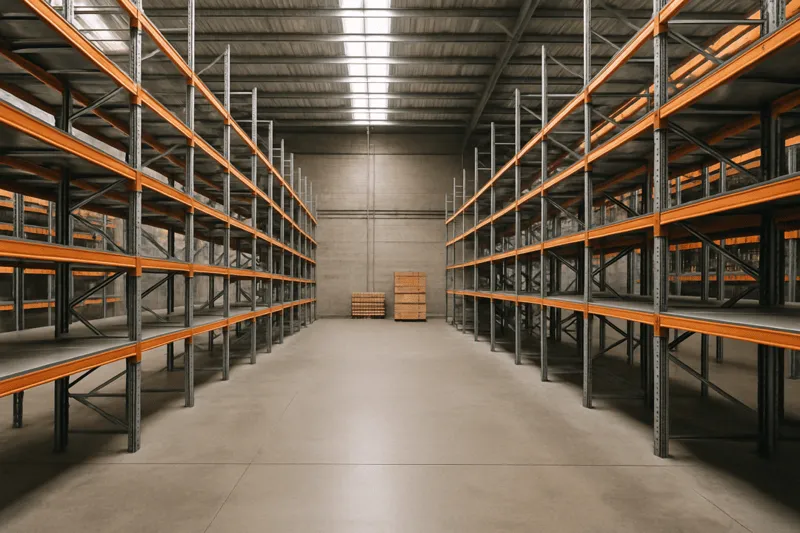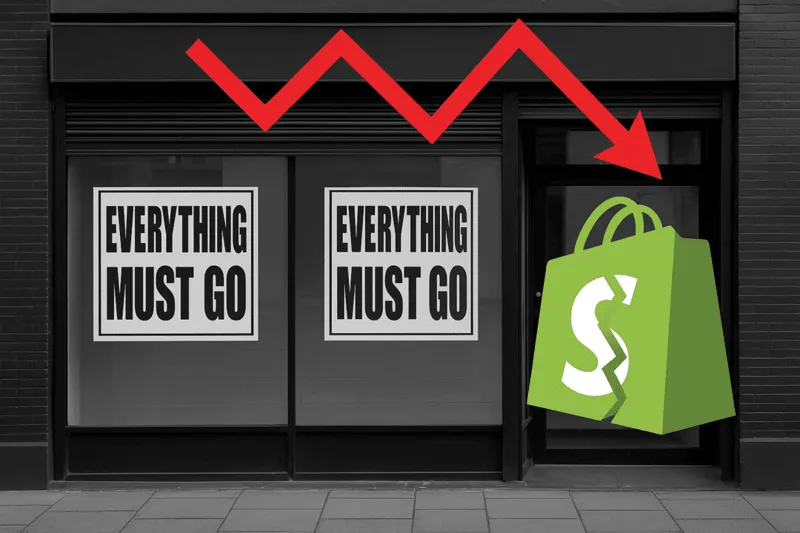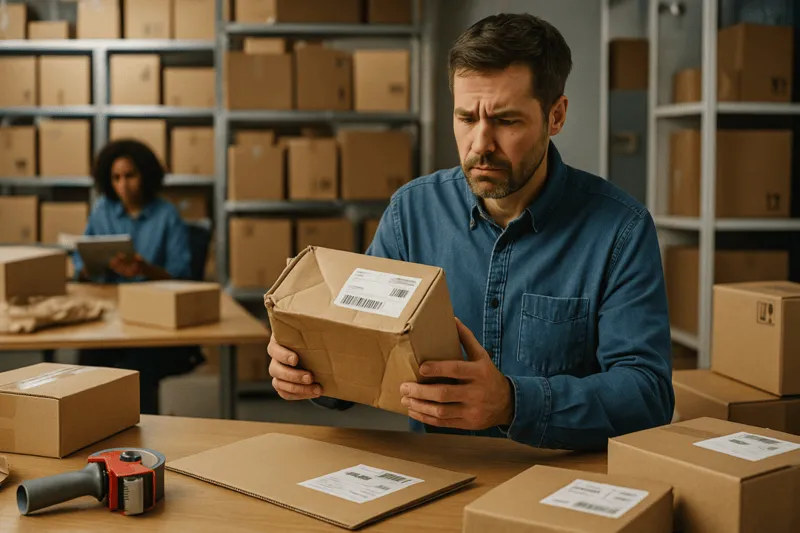How to Manage USPS Peak Season 2025 Rate Hikes and Protect Margins
In this article
 10 minutes
10 minutes
Brace yourselves, USPS is doing it again with a holiday “temporary” rate hike for shipping. As an ecommerce operator, you’ve probably learned to bake these annual USPS surcharges into your peak season planning (even if they still sting). For USPS Peak Season 2025, the Postal Service will levy extra charges on most package shipping services from October 5, 2025 through January 18, 2026 (pending Postal Regulatory Commission approval). That means for the entirety of Q4 and the early January return season, you’ll be paying more for USPS Priority Mail, Priority Mail Express, USPS Ground Advantage, and Parcel Select packages. How much more? On average, about 4% – 6% more per package, according to USPS, roughly a 5.1% surcharge on Ground Advantage and 4.1% on Priority Mail shipments. In practice, the surcharges are flat dollar amounts by weight and zone. A lightweight local package might only cost an extra $0.30 to $0.40 (for commercial vs. retail customers), but a heavier box going cross-country could see around a $6 – $7 hike. And if you’re shipping big stuff via Priority Mail Express, brace for up to a $16 increase on the heaviest long-distance parcels. In short, every domestic parcel shipped with the Postal Service during the holidays will cost more, with the exact pain determined by package weight and distance.
USPS isn’t doing this just for fun; they have their reasons (even if we don’t love it). The Postal Service says the temporary price change is needed to cover extra handling costs and to keep its rates in line with private competitors during the holiday surge. Essentially, UPS and FedEx slap peak surcharges on shippers each year, and USPS doesn’t want to leave money on the table. In the USPS press release, they explicitly stated that this peak pricing aligns with “competitive practices” and is part of their Delivering for America plan to restore financial stability. And boy, does USPS need the money; they reported a $3.1 billion loss in the quarter leading up to this announcement. Rising costs and lower mail volumes have put them deep in the red, so hiking package rates is one way to claw back revenue. It’s worth noting that these holiday surcharges have become a yearly tradition since 2020 (with a brief pause in 2023). Even though USPS calls them “temporary,” often some of that increase sticks around or gets baked into the next general rate increase. As a longtime fulfillment provider, I’ve seen those postage costs ratchet up year after year. So while USPS wants a successful peak season operationally, they also want to make sure we shippers are sharing the burden of all those extra trucks, overtime hours, and elf hats (okay, maybe not the hats) that come with the holidays.
Slash Your Fulfillment Costs by Up to 30%
Cut shipping expenses by 30% and boost profit with Cahoot's AI-optimized fulfillment services and modern tech —no overheads and no humans required!
I'm Interested in Saving Time and MoneyImpact on Ecommerce Sellers and Shippers
So, what does this mean for those of us sending out tons of packages during the holidays? In a nutshell: higher shipping costs and tighter margins. If you offer “free shipping” to customers, these surcharges eat directly into your profit per order. For example, if you normally spend $8 to ship a medium parcel and now it’s $9, that dollar is coming out of your bottom line unless you adjust prices. For merchants who charge customers for shipping, there’s a decision to make: do you raise your rates at checkout to pass on these extra fees? You might have to, especially on heavy items where an extra $5 – $7 is non-trivial. The challenge is doing so without scaring off potential customers. Holiday shoppers are price-sensitive, and a sudden jump in shipping costs could lead to cart abandonment. It’s a delicate balance.
Marketplace sellers face an extra wrinkle: platforms like eBay and Etsy charge their commission (final value fee) on the total transaction, including shipping. That means whenever USPS raises shipping rates, marketplaces get an automatic fee boost from your higher shipping charge. Ouch. It’s like a tax on top of a tax. For eBay sales, I know that a $0.50 postage increase might only marginally affect buyers, but it will also slightly increase the fee eBay takes. Multiply that across hundreds of orders, and it adds up. Postal Service surcharges can also influence shipping strategy. Some sellers might shift more volume to UPS or FedEx if those carriers turn out cheaper for certain weights, though keep in mind UPS and FedEx have their own peak surcharges (often targeted at large volume shippers or oversized packages) rather than a blanket increase on all parcels. So definitely compare rates on a case-by-case basis. Sometimes USPS will still be the most cost-effective even with the surcharge, especially for light packages and/or short distances. But for heavy boxes or Zone 8 shipments, UPS Ground might beat USPS Ground Advantage this year, depending on negotiated rates.
One often overlooked impact: package weight and dimensions optimization. With these flat surcharges kicking in at weight breakpoints, it’s a good reminder to optimize packaging. If you can reduce a package’s weight below 11 lbs (where a big jump occurs) or keep it in a lower zone by shipping from a closer warehouse, you should. For instance, the surcharge for a Ground Advantage package 0 – 3 lbs going far (Zones 5 – 9) is $0.50, but 4 – 10 lbs is $1.00. That’s double. If you can shave a pound or two off through smarter packing or split shipments by region to use nearer fulfillment centers, you can save that $0.50 per package. Over thousands of orders, it matters. This is where having a fulfillment partner like Cahoot with a nationwide network helps; you can forward-position inventory so that most customers are in Zones 1 – 4, where surcharges are much lower (e.g., $0.40 instead of $0.90 for a small parcel). It’s a strategy of “ship shorter distances” to mitigate costs. And you can quickly scale outsourced fulfillment up or down to match your real-time demand.
Looking for a New 3PL? Start with this Free RFP Template
Cut weeks off your selection process. Avoid pitfalls. Get the only 3PL RFP checklist built for ecommerce brands, absolutely free.
Get My Free 3PL RFPStrategies to Mitigate the Surcharge Surge
We can’t avoid the USPS hikes, but we can get creative to lessen the impact. Here are a few tactics either we (Cahoot) or our clients are using and recommending this peak season:
- Plan Pricing and Promotions Thoughtfully: Knowing shipping will cost more, consider adjusting your pricing or promo strategy. This might mean raising product prices a tad or setting a higher free shipping threshold to cover the difference. Alternatively, you could run a holiday sale on items but make it conditional on buying two or more units, that way you get more revenue per shipment (and effectively dilute the shipping cost per item).
- Use Multiple Carriers: Rate-shop every order through your shipping software. If UPS or FedEx can deliver a package cheaper (accounting for their surcharges too), use them. USPS is often best for small parcels, but as weight increases, the calculus can change. Having all three major carriers enabled offers flexibility. And don’t forget regional carriers; they sometimes don’t add surcharges or have lower base rates for nearby zones.
- Optimize Packing: This is a great time to review packaging. Can you use a smaller box or poly mailer to reduce dimensional weight? Can you remove unnecessary packing weight (without compromising product safety)? Even a few ounces off might keep you in a lower weight tier for the surcharge. Also, if you sell bundles, see if splitting into two lighter shipments (to avoid a heavy surcharge band) makes sense cost-wise, or vice versa, combining items to ship fewer packages.
- Leverage Fulfillment Centers in Strategic Locations: As mentioned, if you have the capability to ship from multiple warehouses, do it. The shorter the distance a package travels, the lower the zone and usually the lower the surcharge. My company Cahoot, for instance, places inventory in different regions, so an order to California ships from our West Coast node, arriving faster and incurring, say, a Zone 2 or 3 surcharge (just cents) instead of Zone 8 ($$$). If you’re FBA-only, you can’t control from which warehouse Amazon ships each order, but for your own site orders or Seller Fulfilled Prime, consider a fulfillment partner or 3PL network to distribute inventory.
- Communicate with Customers: This might not reduce costs, but it can preserve trust. If you do have to increase shipping fees or product prices due to carrier rates, be transparent. Customers remember how a company handles things during the crunch. A small note like “Due to seasonal USPS postage increases, our shipping rates will be slightly higher from Oct–Jan” can help manage expectations. Some sellers even encourage customers to order before a certain date to “beat the holiday shipping rush,” indirectly getting them to purchase early, before surcharges kick in on October 5.
Lastly, don’t forget that these surcharges will end (at least this round). Come mid-January, rates should revert to normal (or whatever the new normal is after any general increases). I always mark my calendar for the end date so I can monitor the new state of things. But I won’t be shocked if USPS announces that, say, certain “temporary” increases will roll into a permanent rate hike soon after. It’s happened before. The Postal Service knows that once we adjust to paying a bit more, we barely notice when it becomes the new baseline. Cynicism aside, the best approach is to adapt and control what we can. By optimizing our shipping processes and maybe tightening our belt elsewhere during peak, we can absorb this hit. After all, everyone is facing the same USPS surcharges, so in a way it’s a level playing field. If you manage them smarter than the next guy, that becomes a competitive advantage.
Bottom Line
The USPS peak season rate hike is a headache, but it’s not a show-stopper. As a shipper, treat it as a cost of doing holiday business and use it as motivation to streamline everything you can. And when you see those mail trucks hauling away your piles of Q4 orders, it’s okay to grumble a little about the extra fees, but then get back to work making sure your customers get their packages on time. Happy (expensive) holidays!
Scale Faster with the World’s First Peer-to-Peer Fulfillment Network
Tap into a nationwide network of high-performance partner warehouses — expand capacity, cut shipping costs, and reach customers 1–2 days faster.
Explore Fulfillment NetworkFrequently Asked Questions
When will the USPS peak season 2025 temporary price change take effect?
The Postal Service will apply temporary price changes from October 5, 2025, through January 18, 2026, pending Postal Regulatory Commission review, affecting multiple package shipping services.
Which USPS services are affected by the 2025 peak season rate hikes?
Priority Mail, Priority Mail Express, USPS Ground Advantage, and Parcel Select will all see surcharges, impacting commercial domestic competitive parcels and package services by weight and zone.
Why is the Postal Service raising rates for peak season 2025?
USPS says the temporary price change is needed to cover extra handling costs during high-volume periods and to keep rates in line with competitive practices used by other major carriers.
How much will USPS peak season 2025 surcharges cost shippers?
Surcharges range from around $0.30 for lightweight local USPS Ground Advantage parcels to as much as $16 for heavy Priority Mail Express shipments traveling long distances.
How can ecommerce sellers reduce the impact of USPS peak season rate hikes?
Sellers can optimize package weight, forward-position inventory to lower zones, use multiple carriers for package shipping services, and adjust pricing to cover extra handling costs while maintaining a successful peak season.

Turn Returns Into New Revenue
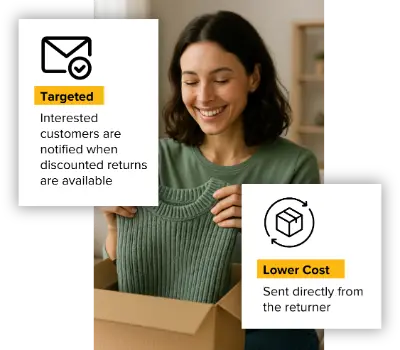
Brace Yourself: Trump’s Tariffs Are Triggering the Next Ecommerce Reorg
Trump’s tariffs went live on August 7th, and yes, it’s messy. What we’re seeing now isn’t just numbers on a chart; it’s a full-on rattle through supply chains, pricing, strategy, and even brand identity.
What Just Happened?
On August 7th, the U.S. government implemented sweeping tariff hikes that have been repeatedly postponed since their introduction, affecting dozens of nations. Countries like Canada, the EU, Japan, South Korea, India, Brazil, and more were hit with new duties ranging from 10% to 50%. Some sectors, like semiconductors, face tariffs as high as 100% unless manufacturing is brought stateside. The expected impact? More than $300 billion in annual tariff revenue, up from $77 billion last year.
This Isn’t a Trade Skirmish, It’s a Strategic Reset
This isn’t like the 2018 China tariffs. This time, the scale is broader and the penalties more targeted. India was hit with 50% tariffs over its ties to Russian oil. Copper got a 50% tariff starting August 1. Switzerland faces 39%, Canada 35%, Brazil 50%. Even long-time allies like the UK didn’t get spared: 10% baseline. There’s no hiding behind “friendly” supply chains anymore.
Slash Your Fulfillment Costs by Up to 30%
Cut shipping expenses by 30% and boost profit with Cahoot's AI-optimized fulfillment services and modern tech —no overheads and no humans required!
I'm Interested in Saving Time and MoneyWhy Ecommerce Sellers Should Be Nervous
If you’re sourcing electronics, semiconductors, base metals, or consumer packaged goods from affected regions, your landed cost just exploded. The buffer of inventory on hand might help… for a few weeks. But when it runs dry, restocks will be brutally expensive unless you pivot your sourcing strategy fast.
Retailers without diversified suppliers are about to enter a pricing war with themselves, eat the cost, or pass it on? Neither is good for brand perception.
5 Real Impacts on Ecommerce Brands
- Skyrocketing COGS. Raw materials and components are suddenly 10 – 50% more expensive, especially for those sourcing from India, Canada, or Brazil.
- Last-minute rerouting. Brands are scrambling to shift to Mexico or Southeast Asia, where tariffs are lower, but contracts and production timelines are tight.
- Inventory imbalance. Expect overstocked goods from pre-tariff suppliers to get pushed while new SKUs are delayed or repriced.
- Customer confusion. Sudden price hikes with no explanation erode trust, especially on marketplaces like Amazon.
- Legal grey zones. Some of these tariffs are still under judicial review; brands don’t know if the fees will hold or be clawed back.
Cahoot’s Perspective: How to Stay Ahead
Now’s the time for every brand to get ruthlessly tactical. Here’s what we’re advising:
Run a tariff impact audit. Map every supplier and part by country of origin and assign risk scores based on tariff exposure.
Explore nearshoring. It’s not just about dodging tariffs. Shipping from Mexico or within the U.S. cuts days off delivery, which improves conversion and reduces return risk.
Bulk up on compliant SKUs. If your bestsellers are safe from tariffs, frontload inventory now before competitors drive up lead times.
Communicate with clarity. If prices are going up, don’t hide it. Build transparency with customers: “We’re adapting to global cost shifts, and here’s how we’re keeping value strong.”
Simulate, don’t speculate. Run three scenarios: full tariff continuation, partial rollback, or legal reversal. Adjust pricing, sourcing, and fulfillment options in advance, not in panic mode.
Final Thoughts
This is not a twilight event; it’s full daylight chaos in trade policy. Tariffs are real, they’re sweeping, and they’re reshaping cost equations, routing logic, and sourcing playbook. Ecommerce operators, logistics strategists, you’ve got work to do. But with foresight, modeling, and a little ingenuity behind you, you’ll not just survive, you’ll adapt, pivot, and thrive.
Looking for a New 3PL? Start with this Free RFP Template
Cut weeks off your selection process. Avoid pitfalls. Get the only 3PL RFP checklist built for ecommerce brands, absolutely free.
Get My Free 3PL RFPFrequently Asked Questions
Which countries are impacted most by Trump’s 2025 tariffs?
India (50%), Brazil (50%), Canada (35%), Switzerland (39%), and the EU (20 – 30%) are among the most heavily impacted. Over 90 countries are affected to date.
How will these tariffs affect ecommerce pricing?
Higher tariffs will raise costs for imported goods, forcing brands to either increase prices or take margin hits. Electronics, apparel, and raw materials will see the sharpest increases.
Are there legal challenges to these new tariffs?
Yes, a May 2025 court ruling deemed some of these tariffs unconstitutional, but that decision is under appeal. The legal outcome remains uncertain.
What can brands do now to mitigate risk?
Conduct a sourcing review, prioritize low-tariff countries, adjust pricing strategies, and use platforms like Cahoot to test fulfillment and inventory models under different trade scenarios.

Turn Returns Into New Revenue

UPS DIM Weight: Matches FedEx with Dimensional Weight Change, and Yes, Your Margins Will Notice
UPS just matched FedEx on packaging trickery, rounding up every fractional inch in a package’s length, width, or height when calculating its dimensional weight (DIM weight) starting August 18. Another silent cost increase shipping pros like us need to wrestle with.
The What, When, and Why
Both UPS and FedEx now say, “If your box is 11.1 inches, we treat it as 12.” No more sweet rounding down at the half-inch mark. That’s a subtle but powerful switch. For example, if your box measures 8.2” x 6.5” x 3.9”, UPS will treat it as 9” x 7” x 4”. And if you’re shipping at scale, this change adds up fast. Keep in mind that if the longest side of your package exceeds certain limits, you may face additional charges or a change in rate category.
This wasn’t on the 2025 pricing roadmap early in the year. But by early August, UPS confirmed the move, aligning with FedEx’s earlier announcement for the same date: August 18.
Let AI Optimize Your Shipping and Boost Profits
Cahoot.ai software selects the best shipping option for every order—saving you time and money automatically. No Human Required.
See AI in ActionWhy It Matters, A Quick Math Example
Dimensional weight (DIM weight) is the king in shipping math-land; it uses (length × width × height) ÷ divisor to decide billing weight, and the higher of actual weight vs. DIM weight wins. The calculation of dimensional weight involves multiplying the package’s length, width, and height to get the cubic size, then dividing by the carrier’s dim factor (dimensional factor), which is a specific number set by UPS. This process is essential to calculate dimensional weight or volumetric weight, and the result is expressed in pounds.
Historically, UPS (and FedEx) calculated DIM weight using actual package dimensions, including fractions, which gave brands a little wiggle room when packaging tightly. Now, any fraction is rounded up to the next whole inch, which inflates the dimensional weight pricing for nearly every box. Think of it as the “rounding tax”; death by inches. The calculation is done in pounds, and the result is always rounded up to the next whole pound.
By rounding each dimension up just a hair… suddenly, cubic volume, and thus billable weight, jumps. For packages exceeding one cubic foot, different dim factors may apply, and UPS uses different numbers for retail rates and daily rates. In one example, a small box shoots from 6 lbs to 8 lbs DIM-weight, and that’s before surcharges. This calculation determines whether the billable weight is based on the actual package weight or the dimensional weight. And by the way, this doesn’t affect the weight on your label; you can tell UPS the box is any size you want, but their scanners will pick up the actual weight and sneak the “real” billed weight into your invoice. Dimensional weight calculations are important for both domestic and international shipments, and using a dimensional weight calculator can help estimate shipping costs accurately.
eShipper’s VP ran the numbers: a model shipper doing 2,500 packages a month sees a $32,678 annual bump, just from this rounding—no volume increase, just rounding.
Carriers Are Quietly Squeezing Margins
This isn’t a one-off. It’s part of a pattern; we’re deep into mid-year margin creep season: surcharges, zone changes, weight triggers. FedEx and UPS are no longer politely increasing GRI once a year, or waiting for peak season to implement Q4 surcharges. What we’re seeing here is an arms race in billing sophistication. Both carriers are squeezing more margin from every cubic inch. Shipping companies like FedEx and UPS use dimensional weight pricing as a pricing technique to optimize shipping rates and shipping cost, basing charges on package size rather than just weight. It’s not about moving packages more efficiently, it’s about charging more per unit of perceived volume.
What Ecommerce Pros and Brand Operators Should Do Now
If you’re an ecommerce brand shipping 1,000+ orders a week, this change will silently eat your margins. A few cents extra per shipment becomes thousands of dollars over time — and that’s before peak season surcharges hit. This change will hurt:
- Merchants using slightly oversized packaging (even if only by millimeters)
- Sellers who haven’t optimized box size or invested in cartonization software
- Brands that rely on single-node fulfillment and can’t zone-optimize shipping
Optimizing package size and packaging materials is essential to reduce shipping costs, especially when dealing with large packages, bulky items, or light packages. Carriers calculate shipping charges based on dimensional weight, so minimizing package size helps ensure you pay less and allows carriers to fit as many packages as possible into their vehicles.
ShipStation vs. Cahoot: 21x Faster, Real Results
Get the inside scoop on how a leading merchant switched from ShipStation to Cahoot—and what happened next. See it to believe it!
See the 21x DifferencePractical Takeaways: How to Adapt Right Now
- Audit packaging profiles: Even small fractions now cost real money—time to measure every template. Where are you paying for air?
- Use a UPS DIM weight calculator: Re-run your most common SKUs and packaging.
- Optimize box sizes: Right-size packaging or switch to flexible poly; trimming half an inch per dimension saves dollars more than you’d think. Reducing the space your package occupies in a truck can help lower shipping heavy items costs.
- Run scenario modeling: Use your shipping data to calculate the delta between the “old math” and the “new math” so finance isn’t blindsided. Note that different shipping carriers may have different dimensional weight policies, so compare options.
- Strategize your fulfillment network: Smaller boxes, smarter distribution; Cahoot’s multi-node platform helps you ship closer to the customer cost-effectively.
Cahoot Angle, Because We’re Not Just Shipping Software
Here’s where Cahoot helps bring clarity (and savings). Our platform enables smarter packaging rules, right down to optimal cartonization, so you don’t accidentally over-bill yourself. Cahoot also helps brands ensure their package dimensions meet shipping company requirements, reducing the risk of unexpected charges from shipping companies like FedEx, UPS, and USPS. Plus, with nationwide networked fulfillment and peer-to-peer returns, you shrink both parcels and long delivery times.
Here’s what you won’t get from a bloated warehouse management system:
- Cartonization automation built-in, not a bolt-on
- Real-time visibility into how packaging size impacts your shipping bill
- Multi-node elasticity: Scale up or down your fulfillment capacity with a national network that flexes with your demand
- No complex IT overhead, WMS integrations, or delays
- A solution designed for ecommerce sellers, not 3PLs stuck in 2015
Think of it this way: while carriers crank up DIM weight via rounding, Cahoot helps you counterbalance—less packing wiggle, more routing finesse, fewer surprise bills.
Putting It All Together, So What’s the Real Impact?
Dimensional weight changes feel minor, but they compound. Carriers just nudged your cost structure upward twice already this summer; this is a third strike, and doing nothing is not an option. The new dimensional weight policy applies to both domestic shipments and international shipments, and most packages will be affected, often resulting in higher shipping costs. But it’s not all bad news.
With a sharpened eye, smart packaging, and tools built to optimize fulfillment (like Cahoot), there’s a way to maintain margins, even in a world where every fractional inch counts.
Cut Costs with the Smartest Shipping On the Market
Guranteed Savings on EVERY shipment with Cahoot's AI-powered rate shopping and humanless label generation. Even for your complex orders.
Cut Costs TodayFrequently Asked Questions
What is UPS dimensional weight and how is it calculated?
UPS DIM weight is a pricing method based on the size of a package, not just its weight. It’s calculated as (L × W × H) ÷ 139. Now, each measurement is rounded up to the next inch before this formula is applied. The number 139 is called the dim factor (or dimensional factor), which is a specific number set by UPS. To calculate dimensional weight in pounds, you divide the cubic size of the package by this dim factor.
How does this change affect ecommerce sellers?
Sellers may see higher shipping charges, especially if packaging is not tightly optimized. This change increases shipping cost and shipping rates, particularly for large packages, bulky items, and light packages, as dimensional weight calculations now play a bigger role in determining the final price. Small differences in box dimensions can now lead to bigger billing weights, raising costs without warning.
How much more could I pay due to the DIM weight round-up rule?
It depends, but even minor changes can push DIM weight up a pound or two per package. This cost increase is a result of dim weight pricing and updated dimensional weight calculations used by carriers to determine shipping rates. Model scenarios showed cost jumps in the 6% to 9% range, and cumulative monthly billing increases thousands of dollars.
What immediate actions should brands take?
Measure all the things. Right-size packaging by carefully selecting package dimensions to fit your products, which can help reduce shipping costs and avoid extra charges from the shipping company. Run cost simulations. And, if you’re using Cahoot, lean on our platform to automate smarter routing, packaging, and scale-efficient fulfillment.
Can Cahoot help reduce dimensional weight shipping costs?
Yes. Cahoot’s platform includes cartonization software and multi-node fulfillment, helping brands use the smallest possible packaging and ship from closer to the customer — cutting both DIM charges and zone surcharges.
Do FedEx and UPS now use the same dimensional weight policy?
Yes. As of August 18, 2025, UPS matches FedEx by rounding up every dimension to the nearest inch, standardizing the DIM weight billing model across both major U.S. parcel carriers.

Turn Returns Into New Revenue

Tips for Combatting Higher Ground Shipping & Delivery Costs
Let me say it plainly: Ground shipping is no longer cheap. Not in 2025. The economy-tier services ecommerce brands relied on to keep costs down are rising faster than any other mode. And the kicker? You probably didn’t notice because they rose quietly. Just a few cents here, a new surcharge there. But it’s compounding…fast.
According to the latest TD Cowen/AFS Freight Index, economy ground parcel rates rose nearly 7.5% year-over-year in Q2 2025. That’s faster than air. Faster than LTL. And definitely faster than most brands can react.
Also, ground parcel rates hit 32% above the January 2018 baseline in Q2, an all-time high, even though average diesel prices fell. That tells you rate increases aren’t tied to fuel, they’re strategic margin plays.
Why is ground shipping getting more expensive?
FedEx and UPS aren’t running charities. In 2025, both carriers quietly inflated their accessorial fees, extended delivery-area surcharges (DAS), and repriced how they interpret “residential” addresses.
UPS, for example, now applies a Remote Area Surcharge to 15% more ZIP codes than in 2024. Combine that with the standard rate increases, and you’re looking at a 10–15% total effective increase for some DTC brands shipping to suburbs.
What’s driving it?
- FedEx’s network restructuring under its “Network 2.0” initiative
- UPS’s post-Teamsters contract cost recovery
- Fewer economy packages post-COVID peak = lower density = higher per-package costs
- Carriers are padding revenue per stop while demand softens
Slash Your Fulfillment Costs by Up to 30%
Cut shipping expenses by 30% and boost profit with Cahoot's AI-optimized fulfillment services and modern tech —no overheads and no humans required!
I'm Interested in Saving Time and MoneyThe Hidden Cost Curve: What the Data Tells Us
The logistics world has been quietly boiling, and most ecommerce operators don’t even realize how cooked they are until the Q4 freight invoices hit like a hammer. That’s why I wanted to step back and show what’s really going on with ground shipping costs, both over time and across weight and zone variables.
When you zoom out, the real story isn’t just one rate hike or another DAS update; it’s the slow, compounding weight of cost acceleration over time. That’s why we analyzed both the long-term parcel index trend and current 2025 rate tables from UPS and FedEx to show what’s happening beneath the surface.
Ground Parcel Index Trend (2018–2025): The Slow Burn That’s Now a Blaze
First, we charted the TD Cowen/AFS Ground Parcel Index from 2018 to 2025. This isn’t just any index; it’s an aggregated pulse check on ground parcel shipping costs across major carriers (UPS, FedEx, and USPS), normalized for inflation, fuel surcharges, and accessorial fees.
If you look at the trendline, you’ll see a gentle incline in the early years. Then 2020 hits. COVID disruptions + ecommerce boom = a sharp climb in rates. What’s surprising, though, is what happened next. You might expect some post-pandemic relief. Nope. The index kept climbing. By Q2 2025, it’s at its highest level ever, driven not by pandemic chaos, but by calculated carrier pricing strategies, DIM weight enforcement, and fewer carrier incentives for SMBs.
Takeaway: If you’re budgeting based on 2022 assumptions, you’re underwater. Index data shows that ground rates have structurally shifted up, and the new normal is…not normal at all. There’s a new silent tax on every ecommerce order, especially for brands that haven’t updated their logistics strategies in years.
Chart 1: FedEx and UPS Ground Parcel Index (2018–2025).
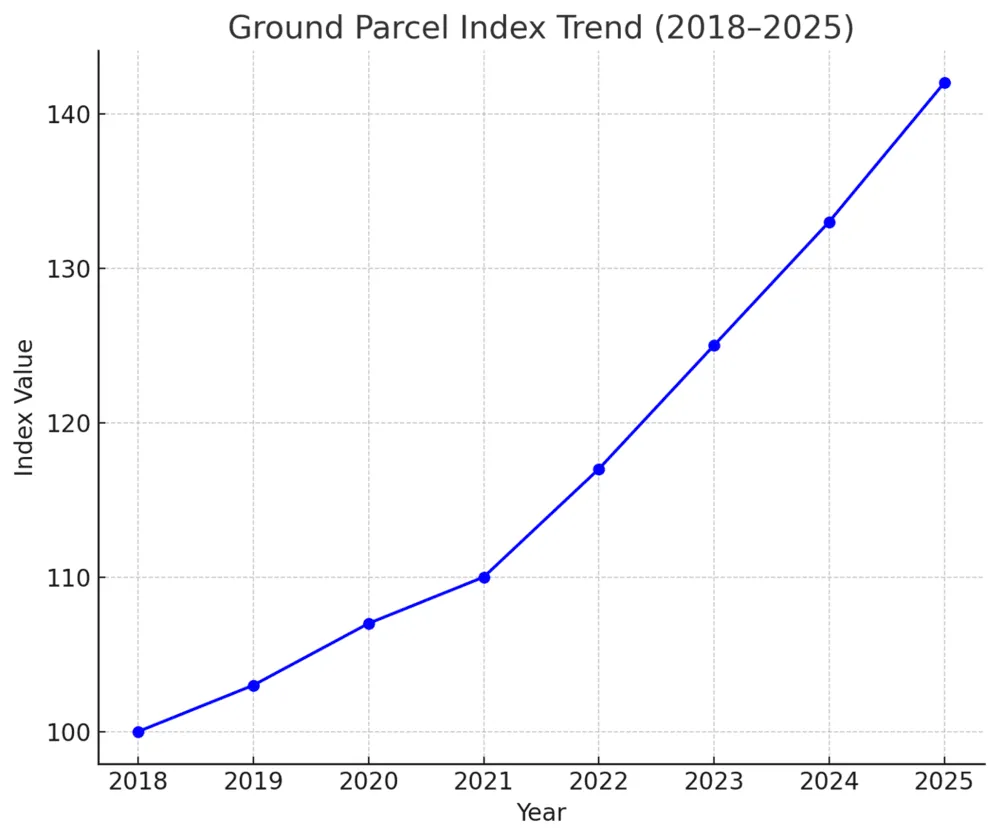
Billed Weight vs. Cost-Per-Package (Multi-Zone): The Hidden Geometry of Shipping Pain
The second chart shows the cost curve for shipping a package via ground, depending on billed weight and destination zone. This was derived by synthesizing rate tables from the official 2025 UPS and FedEx rate guides you can download right now. We simulated realistic pricing across Zones 2 through 8, for packages up to 50 lbs.
What becomes clear fast is this:
- Zone distance has a nonlinear impact. The same 10 lb box costs nearly 30–40% more to ship to Zone 8 than Zone 2.
- Weight-based costs aren’t flat. Each extra pound adds more than just weight; it multiplies cost, especially past the 10–15 lb range where rate brackets steepen.
- You’re probably getting crushed on midweight, long-zone shipments. That 18 lb box going to Zone 7 is silently eroding your margin every time you offer free shipping.
Takeaway: The average ecommerce merchant is overpaying because they’re not engineering for zone or weight efficiency. They’re just printing labels and hoping for the best. Big mistake.
Chart 2: Billed Weight vs. Cost-Per-Package by Zone (FedEx & UPS, 2025).
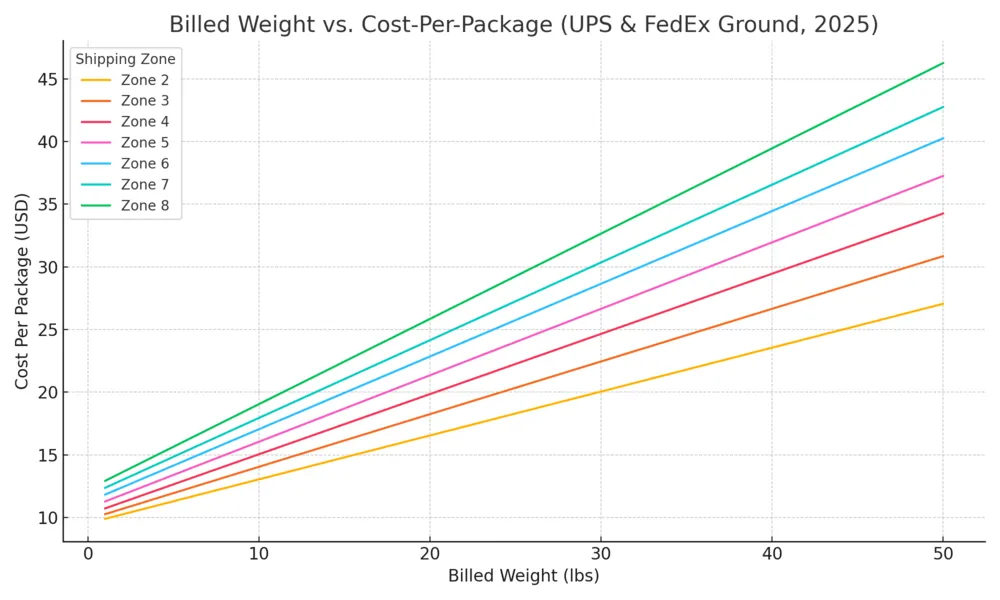
Key insights include:
- Zone escalation is brutal. The same 3 lb package can cost 2× as much going to Zone 8 versus Zone 2. A single-warehouse model is bleeding you dry on long-haul orders.
- Billed weight ≠ actual weight. Dimensional weight pricing inflates cost, especially when packaging isn’t optimized. A 2 lb item in a 12 × 12 × 10 box can be billed at 8+ lbs.
- Carrier policies diverge fast. USPS Ground Advantage offers strong pricing in Zones 2–5 for lightweight packages, while UPS’s negotiated discounts become more competitive at higher weights and volumes. FedEx Ground Economy still has a niche in deferred delivery, but fewer merchants rely on it due to limitations on delivery speed and flexibility (e.g., cannot deliver to PO Boxes).
- Flat rate isn’t always flat. Priority Mail Flat Rate boxes are convenient, but often more expensive than zone-based pricing for 2–5 lb packages going to Zones 2–4.
Takeaway: Don’t just look at average shipping cost. Build a dynamic model that accounts for zone distribution, dimensional weight risk, and carrier behavior. It sounds scarier than it really is: modern technology can help. For the rest of 2025 and into 2026, optimizing for billable weight and fulfillment geography isn’t a “nice-to-have.” It’s a survival strategy.
Looking for a New 3PL? Start with this Free RFP Template
Cut weeks off your selection process. Avoid pitfalls. Get the only 3PL RFP checklist built for ecommerce brands, absolutely free.
Get My Free 3PL RFPPractical Advice for Q3/Q4 2025 and Into 2026
So what’s the fix? Firstly, we’re seeing that brands are shifting lower-value, lightweight shipments to slower, economy service tiers, like FedEx Ground Economy or UPS Ground Saver, to soften cost spikes. But while slowing down your low-value shipments can help, it shouldn’t be the only lever you pull. You still have customer expectations to meet. Let’s dig into how you can keep up, fiercely and intelligently.
1. Shift Volume Strategically, Don’t Just Rant About Rates
The index shows that shippers are diverting lightweight parcels to slower service levels this quarter. That shift drove down cost per package but raised average billed weight, leading to surprising rate hikes in the index data.
Here’s what to test:
- Pilot deferred services for small items (under 2–3 lbs) and see if the slower ETA is worth the savings.
- Never just blanket shift—test geographically. Maybe shift East Coast to Ground Saver and keep West on Priority.
That data-backed nuance lets you stay lean without tanking delivery promises.
2. Audit Surcharges Like a Hunter, Because Carriers Are Hunting Yours
UPS raised its ground fuel surcharge by 15%, FedEx by 12%, even though diesel dropped by 8% YoY. That’s not cost pass-through, it’s revenue arbitrage.
And surcharges aren’t limited to fuel. UPS added fees for:
- Print services
- Payment processing
- Paper invoices
- Zone realignment errors
Every surprise fee is a profit leak if you don’t audit. Run monthly invoice audits using a service such as Refund Retriever or Cahoot’s Carrier Invoice Report to claw back charges and prevent reoccurrence. Benchmark your rates quarterly for visibility over time.
3. Optimize Packaging: Because Every Inch Costs
Don’t ignore the weight/zone multiplier. Carriers LOVE dimensional weight. As zones shift and surcharges rise, oversized packages are now a double penalty. Smart brands:
- Use polybags or bubble mailers for soft goods
- Right-size boxes using cartonization logic
- Use postage scale logs to track size variance
It’s: smaller box → less DIM weight → fewer zones crossed → lower shipping expenses across your program.
4. Leverage USPS When It Makes Sense
With FedEx/UPS squeezing margins, USPS Ground Advantage and Media Mail suddenly look powerful again. They’re slower, yes, but for low-cost items, the trade-off can be entirely worth it.
USPS even rolled out Priority Next-Day service in over 60 markets (and growing), blurring the line between economy and faster options. That’s something to pinch-test.
Note: Priority Mail Next-Day is a separate, contract-only service for businesses with negotiated service agreements that offers next-day delivery to locations within 150 miles of participating USPS locations. Minimum volumes may apply.
5. Customer Communication = Margin Protection
Don’t hide slower service under a free shipping flag. Instead:
- During checkout, call out “Delivered in 4–7 business days via Economy Ground” with real-time tracking links.
- Offer delivery upgrades at purchase for fast-moving or high-value SKUs.
- Use delivery expectations as a conversion tool, not a surprise to the customer.
Clear language prevents complaints, WISMO cases, and refund requests that eat margins.
6. Regional Carriers & Hybrid Last-Mile Models
Major carriers aren’t always cheaper. Some brands are partnering with regional carriers or using local couriers in high-density zones. That often cuts costs without sacrificing delivery time.
Examples I’ve seen work:
- A local carrier picks up in NYC or LA, then delivers packages in bulk to FedEx/UPS/USPS for the final mile.
- A hybrid mix of FedEx/UPS + USPS for rural zones.
This strategy especially helps when mode-shifting lightweight volume away from big carriers. When you’re shipping high volume and low-margin items — think apparel, small electronics, beauty, or anything lightweight — every few cents saved per shipment adds up. These hybrid models help:
- Lower cost-per-package
- Improve delivery coverage in tricky zones
- Avoid rate hikes from major carriers
7. Explore Hybrid Fulfillment
If your 3PL is stuck in one location, you’re likely hitting long zones by default. Spreading inventory closer to customers can drastically reduce the average shipping zone and cost.
8. Re-evaluate your free shipping threshold
If your AOV is $42 and your average shipping cost is $14, you’re giving away margin with every “free” shipment.
Scale Faster with the World’s First Peer-to-Peer Fulfillment Network
Tap into a nationwide network of high-performance partner warehouses — expand capacity, cut shipping costs, and reach customers 1–2 days faster.
Explore Fulfillment NetworkFinal Thoughts: Deep Insights You Won’t Hear at Conferences
With national carrier surcharges climbing again, regional and hybrid carrier strategies aren’t a “nice-to-have”; they’re an edge. More brands will shift this way as delivery economics get tighter, especially for free shipping models or returns.
1. Carriers aren’t passing through costs, they’re engineering margin. Fuel surcharge hikes even as diesel drops prove the point.
2. Volume shifting is the insurer of margin in a hypercharged rate environment. But it demands smart segmentation; customers are willing to wait, until they aren’t.
3. Invoice audits deliver net margin boosts. Often reclaiming unseen dollars if you missed subtle new fees.
4. Packaging isn’t just aesthetics, it’s your Zone Minimizer 2.0. Even an inch past the threshold can break the unit cost math.
5. Communication is your invisible margin guardrail. Customers who understand delivery trade-offs don’t return orders or create customer service tickets; they convert quietly and joyfully.
Look, this isn’t a temporary blip; it’s a pricing realignment. There’s blood in the water. And those who treat it like a rounding error are the ones who’ll be squeezed hardest. With carriers shifting to aggressive surcharge strategies and volume declines ongoing, the brands that survive (and thrive) are those that pivot fast, audit hard, and control the conversation.
And you don’t need to choose between slow, cheap shipping and fast, expensive shipping. You need better shipping math. The brands winning in 2025 aren’t necessarily paying less; they’re paying smarter. Every package is a micro-optimization opportunity. And in this new era of quiet cost creep, your bottom line depends on seeing and solving for the full picture.
Frequently Asked Questions
Should I always redirect lightweight shipments to economy services?
If you’re scaling shipping and have many items under 3 lb, testing slower economy options like FedEx Ground Saver or USPS Ground Advantage is smart, especially when rate drops are significant and customer expectations can be managed.
How often should I audit shipping invoices?
Monthly or quarterly audits work best to catch fuel surcharge hikes, zone realignment fees, and other hidden charges that carriers apply mid-cycle without warning.
Are regional carriers worth the complexity?
Yes, in high-density zones they can cut costs by up to 20%, while reducing reliance on large-carrier surcharges. But you need solid tracking and exception management controls in place.
How can I package smarter to reduce DIM weight?
Use cartonization software to right-size boxes, choose bubble mailers or polybags for lightweight items, and keep a log of package size variances, especially if you’re using automated packing stations.
Will shifting ground volume hurt customer satisfaction?
Not if it’s communicated correctly. By clearly labeling delivery expectations and offering optional upgrades at checkout, most customers see slower ground as an acceptable trade-off for free or lower-cost shipping.

Turn Returns Into New Revenue

What Is Dunnage: Types, Uses, and Benefits
In this article
 13 minutes
13 minutes
- Key Takeaways
- Defining Dunnage
- Types of Dunnage Materials
- Benefits of Using Dunnage
- Choosing the Right Dunnage
- Regulatory Compliance & Safety Standards
- Reusable Dunnage Options
- Improving Shipping Efficiency with Dunnage
- Tracking Dunnage Inventory
- Cost-Effective Dunnage Strategies
- The Future of Dunnage in Logistics
- Summary
- Frequently Asked Questions
Dunnage refers to materials used to protect goods during shipping by filling empty spaces and preventing movement. In this article, we will explore what dunnage is, as well as various types such as bubble wrap, wood, and foam, their uses, and the benefits of using dunnage for safe transportation.
Key Takeaways
- Dunnage is essential for protecting goods during shipping, preventing damage by filling voids and absorbing shocks.
- There are various types of dunnage materials, including bubble wrap, wood, and air pillows, each suited for different shipping needs.
- Investing in proper dunnage not only minimizes damages and returns but can also improve shipping efficiency and compliance with regulations.
Defining Dunnage
Dunnage refers to any robust material utilized in shipping. It serves to safeguard goods from damage. Its primary role is to fill empty spaces within packaging, preventing items from shifting and sustaining damage during transport. This can include anything from preventing scratches and dents to absorbing shocks and vibrations that occur during transit. Choosing the correct amount of dunnage helps businesses significantly reduce returns caused by damages, ensuring products arrive in perfect condition.
Dunnage is not just about protecting individual products; it also plays a crucial role in the overall safety and efficiency of shipping operations. Proper dunnage and steel dunnage ensure the well-being of individuals handling the shipments and maintain the integrity of the cargo protection, including crisscrossed dunnage and floor dunnage.
Whether you’re shipping fragile items that require more material or heavy goods that need structural support, understanding the various types of dunnage materials and fragile materials available can help you make informed decisions.
Slash Your Fulfillment Costs by Up to 30%
Cut shipping expenses by 30% and boost profit with Cahoot's AI-optimized fulfillment services and modern tech —no overheads and no humans required!
I'm Interested in Saving Time and MoneyTypes of Dunnage Materials
Dunnage materials come in various forms, each with unique characteristics suited for specific shipping needs. Common dunnage materials include:
- Bubble wrap
- Solid plastics
- Air pillows
- Wood
- Foam
- Paper-based materials
Knowing these materials helps in selecting the appropriate type of dunnage, providing optimal protection and efficiency during transit.
Bubble Wrap
Still one of the most common forms of protective dunnage, bubble wrap is a versatile packing material primarily used for shock absorption, making it ideal for protecting fragile items like glass and ceramics during shipping. It’s great for wrapping individual items, though traditional bubble wrap can generate static, so avoid it for electronics. Its popularity stems from its reliability and durability; however, it is not biodegradable, and burst bubbles can lose their protective ability over long hauls.
Even with these drawbacks, bubble wrap continues to be a preferred choice for many shippers because of its effectiveness in filling packaging gaps and protecting delicate items.
Solid Plastics
Solid plastic dunnage, often made from high-density polyethylene, is used for high-value industrial shipping due to its robustness and durability. This type of dunnage is particularly effective for protecting heavy and expensive items such as electronics, glass, and ceramics. Its moisture-blocking capabilities and ability to absorb spills further enhance its protective qualities.
Although solid plastics can be pricier, their durability makes them a valuable investment for high-value shipments.
Air Pillows
Air pillows are lightweight, air-filled plastic bags that:
- Provide cushioning and protection during shipping
- Serve as an efficient gap filler (especially in relatively snug boxes)
- Keep items stationary
- Absorb shocks during transport
Air pillows provide a cheap and reusable packaging solution, though they can lose effectiveness if they pop during transit. Their lightweight nature and low cost still make them popular for less fragile items, but they collapse under pressure, so don’t use them for heavy or sharp objects.
Wood Dunnage
Wood dunnage is commonly used for transporting large machinery and appliances. It is also suitable for electronics. It serves as a barrier between heavy goods, preventing damage and stabilizing items within shipping containers. Wooden pallets, considered a form of wood dunnage, provide a sturdy base for large, heavy products like construction materials. Wood is an affordable and ethically sourced material, making it a sustainable choice for dunnage.
For international shipments, wood must be heat-treated and stamped to meet ISPM-15 compliance, ensuring it is free from pests and contaminants.
Despite the need for treatment, wood’s reusability and structural integrity make it a reliable choice for heavy-duty dunnage applications.
Foam Dunnage

When you’re shipping fragile or high-value items, foam is your best friend. Foam dunnage is ideal for protecting delicate items such as electronics, glassware, and medical equipment during transit. Die-cut foam inserts prevent movement, absorb shock, and give off a high-end feel. It comes in two primary types: open-cell foam, which is excellent for cushioning, and closed-cell foam, which offers better moisture and chemical resistance.
Although foam dunnage can be recycled and reused, it is generally less eco-friendly compared to materials like kraft paper. Its lightweight and customizable nature still makes it suitable for various applications.
Molded Pulp or Paper Pulp Inserts
These are becoming increasingly popular as a sustainable alternative to foam. They’re sturdy, biodegradable, and great for consistent SKUs (e.g. candles, skincare jars).
Anti-Static Dunnage for Electronics
If you’re shipping semiconductors, electronics, or components, this is non-negotiable, as it prevents electrostatic discharge (ESD) damage during transport. Often made from foam or plastic treated with anti-static agents, this specialized dunnage ensures that sensitive electronic components remain safe from static electricity, which can cause significant damage if not properly managed.
Paper-Based Dunnage Materials
Paper-based dunnage, made from kraft or recycled paper, is the workhorse of eco-conscious brands. It’s versatile and recyclable, making it an eco-friendly and cost-effective cushioning material designed to fill voids in shipping boxes. Bonus: it makes unboxing feel more natural and “premium” for certain audiences.
Kraft paper is known for its strong tear resistance and cushioning capabilities, making it a popular choice for many shippers. Corrugated paper offers exceptional strength for heavy items while maintaining eco-friendly properties, addressing the growing customer demand for sustainable packaging solutions. It’s ideal for multi-unit shipments or bundled SKUs, as it prevents items from bumping into each other, and can be custom-fitted to boxes for maximum efficiency.
This type of dunnage is biodegradable and recyclable, making it a more sustainable option compared to plastic dunnage. Additionally, paper dunnage often costs less than plastic alternatives while providing comparable protection. Shredded paper, cardboard, or fill, is another paper-based option, serving as a recyclable alternative to packing peanuts and offering effective cushioning for lightweight products. Often used in boutique and gifting brands, it creates a luxurious feel, supports oddly shaped items, and keeps products stable. But beware: it can be messy and increase packaging time.
Custom Dunnage Solutions
Custom dunnage is key for shipping fragile or irregularly shaped items needing specific packaging dimensions. These tailored solutions protect valuable products by providing a perfect fit, ensuring better protection and stability during transit. Custom dunnage can be made from various materials, including foam, plastics, and metals, offering flexibility based on product needs.
Customization techniques, such as CNC cutting and molding, allow for the creation of dunnage that perfectly fits irregularly shaped products with very specific dimensions. Collaboration with dunnage providers can lead to uniquely tailored packaging solutions that enhance the protection of specific cargo.
While custom dunnage is often more expensive due to its bespoke nature, it is a worthwhile investment for businesses shipping high-value, fragile items.
Looking for a New 3PL? Start with this Free RFP Template
Cut weeks off your selection process. Avoid pitfalls. Get the only 3PL RFP checklist built for ecommerce brands, absolutely free.
Get My Free 3PL RFPBenefits of Using Dunnage
Dunnage materials play a critical role in securing shipments and keeping items stable during transportation, thereby minimizing the risk of movement that can lead to damage. Investing in proper dunnage helps businesses prevent costly replacements due to damaged goods, ensuring shipments arrive safely and intact.
The benefits of using dunnage include damage protection, moisture protection, and shock absorption, all of which contribute to the safe delivery of products.
Damage Protection
Dunnage plays a crucial role in absorbing shocks and vibrations, significantly reducing the risk of damage to goods. Proper use of dunnage can prevent fragile items such as delicate electronics and ornate glassware from being damaged during transport. Air pillows and dunnage bags are commonly used for filling voids and absorbing shock, ensuring the protection of sensitive items.
This not only enhances shipping safety but also minimizes shipping costs by reducing the likelihood of damage.
Moisture Protection
Moisture-resistant dunnage is essential for protecting products during transit, as moisture can cause significant damage. Certain dunnage types are designed to protect cargo from environmental factors, maintaining product integrity to protect goods.
For example, airbags not only protect against physical impacts but also help create barriers, maintaining moisture barriers and preventing damage from spills or humidity.
Shock Absorption
Effective dunnage materials, such as airbags and air pillows, provide excellent shock absorption properties, protecting delicate items during transit. Dunnage plays a crucial role in reducing the risk of damage caused by impacts during handling, ensuring that goods can absorb shock and be delivered safely and without damage.
Choosing the Right Dunnage
Selecting the right dunnage involves assessing the characteristics of the cargo, such as its fragility, weight, and shape. Businesses need to consider the types of products being shipped, the shipping methods used, and the specific packing options available. For example, wood is favored for its strength and versatility but may require additional protective measures for moisture-sensitive cargo. Custom dunnage solutions can be created to meet unique needs, ensuring enhanced protection and stability for specific cargo.
Regulatory compliance is also crucial when choosing dunnage, as various cargo types may have specific safety and legal requirements. Careful evaluation of these factors enables businesses to select the right dunnage materials, offering the best protection and regulatory compliance.
Regulatory Compliance & Safety Standards
Adhering to regulatory standards ensures the safe and legal transportation of goods. For example, ISPM-15 regulations require that wood dunnage used in international shipping be heat-treated and stamped to prevent the transfer of pests. Additionally, OSHA has specific load securement expectations that must be met to ensure the safety of cargo during transit.
Eco-label certifications can also play a significant role in demonstrating a commitment to sustainability. By adhering to these standards, businesses can ensure that their shipping practices are both safe and environmentally responsible.
Reusable Dunnage Options
Reusable dunnage options are not only environmentally sustainable but can also reduce long-term costs for businesses. Examples include:
- Wood dunnage, a renewable resource that can be reused multiple times.
- Foam dunnage, particularly types like expanded polypropylene (EPP), which is recyclable and supports eco-friendly packaging.
- Partnering with vendors who offer take-back programs or biodegradable materials to further enhance sustainability efforts.
Proper disposal or recycling of dunnage materials minimizes environmental impact. Implementing reuse practices and partnering with sustainable vendors helps businesses manage dunnage waste and packaging waste effectively, contributing to a greener shipping industry through the use of recycled materials.
Improving Shipping Efficiency with Dunnage
Dunnage streamlines the shipping process by optimizing shipping container space and reducing shipping costs. Materials like kraft paper and packing materials are cost-effective and ensure items arrive safely by minimizing in-transit movement. Air pillows provide cushioning for fragile items, further enhancing shipping efficiency. Businesses can also use dunnage to effectively ship products while maintaining safety.
Effective inventory management systems allow for real-time tracking of dunnage materials, ensuring their availability and location are continuously updated. Utilizing technology-driven solutions enhances decision-making in dunnage management by providing visibility into stock levels and usage patterns, ultimately improving overall shipping efficiency.
Tracking Dunnage Inventory
Tracking dunnage inventory is essential for maintaining adequate stock levels and avoiding supply shortages. An inventory management system allows businesses to monitor stock levels, usage rates, and reorder points, ensuring they have the necessary materials on hand when needed. Monitoring usage rates helps businesses understand how quickly dunnage is consumed, allowing for timely reorders.
Implementing best practices can enhance dunnage inventory management, including:
- Conducting regular audits
- Utilizing automated alerts
- Maintaining accurate records
- Setting reorder points based on usage rates
These practices allow businesses to effectively manage dunnage supplies and prevent waste.
Cost-Effective Dunnage Strategies
Cost-effective dunnage strategies balance quality and cost, allowing businesses to protect products during shipping without significantly raising overall shipping costs. Some cost-effective dunnage materials include kraft paper and corrugated paper, known for their protective qualities and affordability. Using lightweight dunnage materials can also reduce shipping expenses while still providing adequate protection.
To improve dunnage usage and shipping efficiency, consider the following strategies:
- Choose appropriately sized packaging for products to minimize dunnage waste and shipping costs.
- Utilize a digital logistics platform to optimize dunnage usage and enhance overall shipping efficiency.
- Maintain accurate records of dunnage inventory.
- Use data analytics to forecast future dunnage needs, allowing better planning and resource allocation to improve cost efficiency.
Scale Faster with the World’s First Peer-to-Peer Fulfillment Network
Tap into a nationwide network of high-performance partner warehouses — expand capacity, cut shipping costs, and reach customers 1–2 days faster.
Explore Fulfillment NetworkThe Future of Dunnage in Logistics
The future of dunnage in logistics lies in technology-driven optimization. AI-based dunnage optimization tools and 3D scanning for box size and void fill prediction are already transforming the industry. These technologies allow for more precise and efficient use of dunnage materials, reducing waste and improving protection for shipped goods.
Integrating dunnage planning into Warehouse Management Systems (WMS) or Transportation Management Systems (TMS) can further enhance shipping efficiency. As the shipping industry continues to evolve, the intelligent use of automation and optimization techniques will play a critical role in achieving faster fulfillment and reduced labor costs.
Summary
Understanding and utilizing the right dunnage materials is essential for ensuring the safe and efficient transportation of goods. From bubble wrap to custom solutions, each type of dunnage offers unique benefits and applications. By choosing the appropriate dunnage, businesses can protect their products from damage, moisture, and shocks, ultimately reducing costs and improving customer satisfaction.
As the logistics industry continues to innovate, the future of dunnage will be shaped by technological advancements and a growing emphasis on sustainability. By staying informed about the latest developments and best practices, businesses can optimize their shipping processes and contribute to a more sustainable and efficient future. So, make the smart choice, invest in proper dunnage, and watch your shipping operations thrive.
Frequently Asked Questions
What is dunnage?
Dunnage is the protective material used in shipping to fill empty spaces and prevent damage to goods by absorbing shocks and vibrations. It’s essential for keeping your items safe during transit!
What are some common types of dunnage materials?
You’ve got several options for dunnage materials, like bubble wrap, foam, wood, and air pillows. Each one helps protect your items during shipping and handling.
Why is regulatory compliance important for dunnage?
Regulatory compliance is important for dunnage because it guarantees the safe and legal transport of goods while meeting specific standards like ISPM-15 for wood materials. This not only protects your shipments but also helps avoid potential legal issues.
How can businesses track their dunnage inventory?
To effectively track dunnage inventory, businesses should utilize an inventory management system that keeps tabs on stock levels and usage rates. This way, they can always ensure they have the right materials available when needed.
What are the benefits of using reusable dunnage?
Using reusable dunnage is a smart choice because it’s environmentally friendly and can save your business money in the long run. Plus, with options like wood and foam dunnage, you’re supporting sustainability while cutting costs.

Turn Returns Into New Revenue

Cahoot vs ShipStation: Exploring ShipStation Alternatives
In this article
 5 minutes
5 minutes
- The Hidden Cost of Holding On to ShipStation
- ⚠️ ShipStation Isn’t a Shipping Platform. It’s a Liability.
- 🧩 Disconnected Tools Create Real Damage
- 📦 Inventory Management — The Overlooked Engine of Fulfillment
- 🧠 Cahoot Is Built for Intelligent Commerce
- 🔥 Real Costs. Real Damage.
- 🛠️ Your Shipping Stack Shouldn’t Be a Frankenstein
- 🧱 PE-Owned, Product-Stalled: Why ShipStation Won’t Catch Up
- ⏳ Upgrade Before It Hurts
- 🚀 Ready for Shipping That Actually Saves You Money?
- Frequently Asked Questions
The Hidden Cost of Holding On to ShipStation
If you’re using ShipStation in 2025, you’re not shipping smarter — you’re bleeding margin.
⚠️ ShipStation Isn’t a Shipping Platform. It’s a Liability.
ShipStation was built when ecommerce was simple — one warehouse, one carrier, one label. But your brand isn’t in 2015 anymore. And neither is the market. Modern operations often span multiple locations, requiring intelligent automation across fulfillment, shipping, inventory, and returns. ShipStation can’t keep up.
🧩 Disconnected Tools Create Real Damage
ShipStation is a single-player tool in a multiplayer world. Here’s what happens when your ops stack doesn’t talk to itself:
|
Operational Failure
|
ShipStation Problem
|
Financial Impact
|
|---|---|---|
|
Wrong box used for shipping
|
No cartonization logic; using the wrong box increases dim weight. Choosing the right box and minimizing void fill reduces dimensional weight and saves on shipping costs.
|
Higher DIM → inflated label cost → lower margin
|
|
Overnight air shipment from wrong warehouse
|
No dynamic reassignment or SLA logic
|
$100+ per order to salvage reputation or avoid SFP strike
|
|
Duplicate effort during peak
|
No barcode verification, no smart routing
|
Mis-picks, reships, angry customers, team burnout
|
📦 Inventory Management — The Overlooked Engine of Fulfillment
Inventory management isn’t just a back-office task—it’s the engine that powers your entire fulfillment machine. In today’s ecommerce landscape, the way you manage inventory directly impacts shipping costs, customer satisfaction, and your ability to scale across multiple sales channels.
When inventory levels are dialed in, you avoid costly stockouts and overstock situations, ensuring that every order can be fulfilled quickly and accurately. This precision streamlines your order fulfillment workflow, slashing delays and keeping customers happy. Efficient inventory management also means you can optimize packaging materials and reduce dim weights, so you’re not paying extra to ship empty space.
Smart companies know that inventory isn’t just about what’s on the shelf—it’s about how fast and efficiently you can move it. By integrating inventory management with your shipping operations, you unlock new levels of efficiency, cut fulfillment costs, and deliver the kind of customer experience that keeps people coming back.
🧠 Cahoot Is Built for Intelligent Commerce
Cahoot’s system isn’t just about printing labels. It makes real-time decisions to improve performance, efficiently fulfill orders, protect your margins, enhance your customer experience, and keep your brand future-proof.
|
Cahoot Advantage
|
Result
|
|---|---|
|
AI-powered cartonization tied to packaging inventory
|
Lower DIM + no delays + better unboxing
|
|
SLA-aware shipping logic (Amazon SFP, Walmart 2-Day, etc.)
|
No late orders, no guesswork
|
|
Real-time warehouse reassignment + exception handling
|
Lower costs + higher reliability
|
|
Peer-to-peer fulfillment network
|
Scale with flexibility + resilience
|
|
Integrated post-purchase tools
|
Higher NPS, lower WISMO, verified return fraud detection
|
🔥 Real Costs. Real Damage.
Let’s talk numbers:
- $2.75 per order lost due to wrong packaging (on average)
- $98.00 for every overnight air label due to warehouse mismatch
- $1.20 per order from return fraud via unverified return systems
- Thousands in lost SFP eligibility revenue
Multiply that by 10,000 orders — and ShipStation’s “cheap” software just cost you a six-figure headache.
🛠️ Your Shipping Stack Shouldn’t Be a Frankenstein
Most ShipStation users bolt on plugins, Excel workarounds, and Slack fire drills. That’s not software — it’s survival mode.
Cahoot unifies:
- Fulfillment operations
- Smart shipping software
- Automated shipping workflow, including rate-shopping and packaging selection
- Post-purchase visibility
- AI-powered returns management
…in one connected, AI-first platform that improves efficiency, reduces costs, and enhances customer satisfaction.
🧱 PE-Owned, Product-Stalled: Why ShipStation Won’t Catch Up
ShipStation is owned by a private equity firm (Stamps.com). Innovation has slowed to a crawl. Meanwhile, the complexity of ecommerce logistics is accelerating. If your ops are growing, ShipStation will hold you back.
“Good enough” isn’t good enough when you’re scaling.
⏳ Upgrade Before It Hurts
The longer you wait, the more expensive it gets. Every missed SLA, every mistyped label, every oversized box chips away at your brand and your margins.
🚀 Ready for Shipping That Actually Saves You Money?
Switch to Cahoot.
Smarter automation. Fully integrated. Built for the next generation of ecommerce brands.
Frequently Asked Questions
What are the main problems with ShipStation?
ShipStation was built for simpler ecommerce operations. It lacks intelligent cartonization, dynamic warehouse reassignment, SLA-aware shipping logic, and integrated fraud-resistant returns—all critical for modern ecommerce brands scaling across multiple nodes and channels.
How does Cahoot compare to ShipStation?
Cahoot combines multi-node fulfillment, smart shipping software, and returns management in a single AI-powered platform. Unlike ShipStation, which requires bolt-on plugins and manual workarounds, Cahoot automates decision-making and reduces operational errors that cost brands thousands.
Can Cahoot replace ShipStation completely?
Yes. Cahoot offers all the key functions of shipping software—rate shopping, label generation, cartonization, SLA routing—plus fulfillment and returns in one platform. Brands looking to grow efficiently often find it’s a full replacement with added savings.
Is Cahoot only for large brands?
No. Cahoot supports brands at all stages—from growing DTC shops with a single warehouse to enterprise retailers with nationwide fulfillment needs. Our peer-to-peer fulfillment model makes advanced logistics accessible without massive overhead.
What’s the ROI of switching from ShipStation to Cahoot?
Brands typically see savings from reduced DIM weight, fewer SLA violations, fewer mis-picks and reships, and better returns fraud detection. These benefits add up quickly—often leading to six-figure annual savings depending on order volume.

Turn Returns Into New Revenue

Amazon Expands FBA Box Size: What Sellers Need to Know
In this article
 4 minutes
4 minutes
The content of this article covers Amazon’s recent FBA box‐size update, the AWD implications, pros and cons of the change, smart questions to ask, seller feedback, Cahoot’s solution, and FAQs—all in one place.
What Really Changed, and Why It Matters
As of June 20, 2025, Amazon raised the maximum allowable carton length for FBA shipments from 25 inches to 36 inches. Width, height, and the 50-pound weight limit remain unchanged. If you’re wondering whether this move is a big deal, the answer is yes, but with caveats.
This change opens the door for smarter packaging strategies. Think: better product bundling, reduced outer box count, and possibly some cost savings on inbound shipping if you optimize correctly. But before you go redesigning every carton, hold up—this doesn’t necessarily extend to AWD (Amazon Warehousing and Distribution), where size restrictions still apply in most cases.
The AWD Confusion Factor
A lot of sellers on Amazon forums and LinkedIn have been asking: “Does this apply to AWD too?” The short answer is: no, not really. AWD still enforces its own packaging criteria, especially around conveyable cartons. One seller summed it up well: “FBA might let me go long now, but AWD’s still playing by the old rulebook.”
The takeaway? Don’t assume this is a one‐size‐fits‐all update. Multichannel sellers and anyone using AWD for upstream storage should keep using separate carton spec templates.
Slash Your Fulfillment Costs by Up to 30%
Cut shipping expenses by 30% and boost profit with Cahoot's AI-optimized fulfillment services and modern tech —no overheads and no humans required!
I'm Interested in Saving Time and MoneyWhy Amazon Made This Move Now
This isn’t random. 2025 has been packed with changes to FBA and AWD capacity policies, fees, and prep requirements. This latest shift comes after Amazon:
- Reduced peak storage limits to ~5 months of forecasted sales
- Rolled out smart storage rate tiers for AWD
- Cracked down on inventory performance metrics
In that context, the 36-inch change looks less like a gift and more like an efficiency nudge. Amazon wants you to ship smarter, not bigger. But if bigger helps you ship smarter, you now have the green light.
The Pros, and the Not-So-Obvious Cons
The Good:
The Gotchas:
Smart Questions to Ask Right Now
- Which of my ASINs can benefit from the 36-inch allowance?
- Are my 3PLs or prep centers even aware of the change?
- Do I need to maintain separate carton rules for FBA vs AWD?
- Is my packaging team trained to avoid dimensional-weight traps?
What Sellers Are Saying
One seller on the forums wrote, “It’s about time… my standard lamps have been costing me extra for repackaging for years.” Another added, “Unless AWD follows suit, this just adds another layer of complexity.”
We’re seeing the same split across LinkedIn: half of the brands are optimistic, the other half are cautious. Everyone wants more flexibility, but not at the cost of downstream penalties or confusion.
Looking for a New 3PL? Start with this Free RFP Template
Cut weeks off your selection process. Avoid pitfalls. Get the only 3PL RFP checklist built for ecommerce brands, absolutely free.
Get My Free 3PL RFPCahoot’s Edge: No Length Caps, No Guesswork
Here’s where we come in. At Cahoot, we don’t impose arbitrary box-length limits. Whether you ship 12 inches or 42 inches, our peer-to-peer fulfillment network accommodates your carton, not the other way around.
And because we operate channel-agnostic, there’s no need to split inventory or set up redundant prep processes just to comply with Amazon’s shifting rules. When Amazon changes the rules, we don’t scramble. Our systems are already built for flexibility.
Final Thought
Amazon’s carton-length change is an opportunity, if you know how to use it. It’s not a magic solution, but for the right SKUs, it can open up serious efficiency. Just make sure your fulfillment strategy isn’t relying on assumptions. Because at Amazon, the rules always change.
Frequently Asked Questions
What’s the new FBA box length limit?
The new maximum is 36 inches in length. Weight (50 lbs max), width, and height restrictions remain the same.
Does this apply to Amazon AWD?
No. AWD still enforces a 25-inch limit for conveyable cartons. Check your spec sheets before making changes.
Will this reduce shipping costs?
It can, especially if you bundle multiple units in one carton. But watch for dimensional weight traps.
Can Cahoot handle boxes over 36 inches?
Yes. Cahoot imposes no size limits on cartons, making it ideal for larger or irregularly shaped products.
Do I need to update my packaging workflows?
Probably. Most sellers will benefit from revisiting their pack plans and checking how their software handles the new dimensions.

Turn Returns Into New Revenue

How Can Shippers Use Rising Vacancies to Secure More Flexible, Cost-Effective Storage?
The U.S. warehouse market is shifting fast. Vacancy rates just hit 7.1% in Q2 2025, the highest level in over a decade. It’s a dramatic swing from the space-constrained chaos of just a few years ago, when pandemic-fueled demand sent shippers scrambling to lock in square footage at any price.
Today, those same warehouses are sitting partially empty. Sublease availability has surged past 225 million square feet, and developers have slashed new construction by 45% year-over-year. For brands and logistics teams still feeling whiplash from last year’s stockpiling wave, the current moment might look like a warning. But with the right strategy, it’s actually a window of opportunity.
The Hidden Cost of Empty Space
Leased square footage that sits idle is more than just a sunk cost; it’s a drag on cash flow, inventory turns, and operational efficiency. Many brands overcommitted during the supply chain panic and are now underutilizing expensive long-term leases. Rents, still averaging over $10 per square foot, haven’t dropped much due to lease lag. That means even as the market softens, the costs remain sticky.
If you’re a shipper sitting on more space than you need, it’s time to rethink your approach to storage. Subleasing is one option, but it isn’t always simple. Quality of sublease inventory can vary widely, and not every landlord is keen to play ball. That’s where more creative models are gaining traction.
Slash Your Fulfillment Costs by Up to 30%
Cut shipping expenses by 30% and boost profit with Cahoot's AI-optimized fulfillment services and modern tech —no overheads and no humans required!
I'm Interested in Saving Time and MoneyThe Rise of Flexible Storage Models
As traditional warehousing strains under cost and commitment, brands are exploring alternatives. Multi-tenant and shared warehouse spaces are becoming more viable for those with fluctuating demand. These environments allow shippers to expand or contract their footprint in real time, without the burden of long leases.
Another emerging option is the peer-to-peer fulfillment model. Platforms like the Cahoot P2P Fulfillment Network allow merchants to monetize their unused storage and fulfillment capacity by plugging into a distributed network of sellers. That means if you’re looking to get out of a lease, you might be able to repurpose your existing warehouse space as a revenue-generating node in someone else’s ecommerce operation. Or, if you’re winding down your lease entirely, you could still ship nationally using the Cahoot network without the overhead.
Negotiating From a Position of Strength
In softening warehouse markets like the Inland Empire, Dallas-Fort Worth, and even New Jersey, shippers are finding themselves in a rare buyer’s market. With construction down and sublease listings up, there’s leverage to negotiate short-term deals, flexible expansion clauses, and even tenant improvement credits, terms that would have been laughable in 2021.
But it takes planning. The key is to assess your demand cycles and real estate needs with brutal honesty. How much space do you truly need? Can your inventory strategy adapt to decentralized fulfillment? Would modular lease structures serve your business better than fixed commitments?
These are hard questions, but answering them now can create long-term resilience.
Timing the Real Estate Reset
Right now, we’re hearing from brands that are reevaluating every fixed cost on the books, and warehousing is near the top of the list. The companies that paused, audited their operations, and leaned into flexibility early are already seeing savings compound. One brand recently cut 40% of their storage expense by transitioning part of their fulfillment to Cahoot nodes; they didn’t lose autonomy, they gained agility.
That kind of agility is becoming a competitive advantage. It’s not just about finding cheaper storage, it’s about staying nimble when the market shifts again, and it will.
Looking for a New 3PL? Start with this Free RFP Template
Cut weeks off your selection process. Avoid pitfalls. Get the only 3PL RFP checklist built for ecommerce brands, absolutely free.
Get My Free 3PL RFPHow to Capitalize Now
This isn’t about gambling on the market. It’s about hedging against the next disruption while improving today’s bottom line. Whether that means subleasing, switching to a shared facility, or plugging into a P2P network, the goal is the same: reduce fixed costs, increase flexibility, and stay ready for whatever comes next.
The warehouse vacancy surge won’t last forever. But for shippers willing to act now, it’s a rare chance to shift from reactive leasing to a proactive strategy. Just make sure your space is working for you, not against you.
Frequently Asked Questions
What is driving the spike in warehouse vacancies in 2025?
The surge is largely due to pandemic-era overbuilding, reduced demand, and companies offloading excess space they acquired during the supply chain crunch of 2021–2023.
Why are rents still high despite rising vacancies?
Many leases were signed when the market was tight and are locked in for years. Landlords are not rushing to lower rates until those contracts come up for renewal.
What is a sublease, and is it worth considering?
A sublease is when a tenant leases out unused warehouse space to another company. It can be a cost-effective short-term option, but it requires due diligence on the space condition and lease terms.
What is peer-to-peer fulfillment?
Peer-to-peer fulfillment allows businesses to fulfill orders from each other’s warehouses using a shared technology platform like Cahoot. It’s a flexible and scalable alternative to owning or leasing large fulfillment centers.
How can smaller brands benefit from the warehouse vacancy trend?
Smaller brands can take advantage of shared warehouse spaces, short-term subleases, or P2P networks to avoid committing to expensive, long-term leases while maintaining nationwide shipping capabilities.

Turn Returns Into New Revenue

DTC Brands Are Dying Faster Than Ever
Ecommerce isn’t just cooling off; it’s contracting
In Q2 2025, Shopify store closures outpaced new installs for the first time ever: 1.5 closures per new store. That’s not a blip. That’s a reckoning.
Revenue for small DTC brands is down 25% year over year. The overall DTC market is down 9%. And consumer spending sentiment is the weakest it’s been since 2023. Just in April, 1% of DTC brands filed for Chapter 11. That’s a flood.
So what’s going on? Why now? And what can you actually do about it if you run a brand or support one?
The “Why” Behind the Collapse
Tariffs + Inventory = Cash Flow Crisis
Here’s the brutal math: tariffs go up; landed cost skyrockets. And a lot of brands placed orders ahead of the tariff hikes, only to watch demand dry up. Now they’re sitting on overpriced inventory they can’t move, tying up precious cash. Inventory isn’t just stuff on shelves; it’s money trapped in cardboard.
CAC Is Climbing; Retention Isn’t Saving You
Customer acquisition costs are going up, just as the effectiveness of paid channels is going down. Even retention can’t save you when consumers are delaying purchases or trading down to cheaper alternatives. Many brands already pulled future revenue forward during the 2020–2022 boom. Now, there’s nothing left to squeeze.
Post-COVID Saturation Is Real
Let’s be honest: not every brand deserves to exist. Many were spun up with plug-and-play toolkits and cheap paid ads. That worked when capital was cheap and consumers were bored. Now? The music stopped. And not everyone found a chair.
Slash Your Fulfillment Costs by Up to 30%
Cut shipping expenses by 30% and boost profit with Cahoot's AI-optimized fulfillment services and modern tech —no overheads and no humans required!
I'm Interested in Saving Time and MoneyWhy Now?
A few reasons:
- Macroeconomic headwinds: Tariffs, inflation, and consumer anxiety are colliding.
- The era of easy VC money is over: Brands are being forced to act like real businesses.
- Platform fatigue: Shopify, Amazon, and TikTok Shops are crowded and expensive to win on.
This isn’t just a cyclical dip; it’s a structural correction. We’re witnessing the clearing of an ecosystem that got way too crowded, way too fast.
Who’s Most Vulnerable?
Brands that were built on borrowed time and easy growth:
- Brands with high CACs and low AOVs
- Brands heavily reliant on paid social for discovery
- Brands with no supply chain flexibility
- Brands without real community, loyalty, or differentiation
Real examples:
- Flaus canceled a $30K Hamptons pop-up.
- Beau Ties of Vermont cut staff hours.
- Loftie saw lamp sales drop 80%.
What You Can Do
Audit Your Cash Flow Now
Know exactly how many months of runway you have, with and without new revenue. Get real about your burn and where the landmines are.
Recalculate Your CAC & Contribution Margins
Don’t just look at blended ROAS. Look at the actual contribution margin after fulfillment, returns, payment fees, and platform costs. If you’re underwater on a hero SKU, fix it or cut it.
Diversify Fulfillment & Cut Ops Costs
With tariffs, shipping surcharges, and inflation hitting from all angles, fulfillment is your biggest lever. Use it. A partner like Cahoot can unify fulfillment across channels, reduce shipping zones, and preserve margins.
Reprioritize Community, Not Just Campaigns
Start building real relationships, not just funneling ad dollars. Brands with real communities are taking less of a hit right now. That’s not a coincidence.
Looking for a New 3PL? Start with this Free RFP Template
Cut weeks off your selection process. Avoid pitfalls. Get the only 3PL RFP checklist built for ecommerce brands, absolutely free.
Get My Free 3PL RFPWhat the Future Looks Like
It’s going to get worse before it gets better.
Expect more closures, more acquisitions, and more consolidation. But also: the strongest brands, the ones with real margins, operational discipline, and customer loyalty, will finally have room to grow again.
This moment is painful, but it’s also clarifying. The ecosystem can’t support 100 brands selling the same $49 water bottle with a different logo. The brands that survive this cycle will be the ones that finally build a real business.
Frequently Asked Questions
What’s causing the DTC brand collapse in 2025?
Tariffs, inflation, rising customer acquisition costs, and oversaturation in key categories are squeezing margins and killing demand.
Why are so many Shopify stores shutting down?
Closures now outpace new installs. Many brands can’t survive rising CAC, unsold inventory, and cash flow pressure.
Are all DTC brands at risk?
Not all, but the most vulnerable are those reliant on paid acquisition, single-channel sales, or undifferentiated products.
Are Shopify brands more vulnerable than Amazon sellers?
Often, yes; Amazon sellers may have more built-in demand and streamlined fulfillment.
What categories are getting hit hardest by the economic pressures of 2025?
Home goods, wellness, and accessories have seen the sharpest demand drop.
What can DTC operators do right now?
Get ruthless on cash flow, margins, and operational flexibility. Cut burn, audit margins, diversify fulfillment, and refocus on loyalty and community. Flexible, scalable fulfillment can reduce overhead and improve margins, crucial for survival.
Citations
- Tariffs Trigger the Sharpest Drop in Online Spending in Over a Decade: Read more.
- Faced with economic anxiety, retailers pare expectations for the year: Read more.
- Brands grapple with strained cash flow amid tariffs: Read more.
- US prices for China-made goods rise faster than inflation, analysis shows, as tariffs bite: Read more.
- US prices for China-made goods sold on Amazon rising faster than inflation: Read more.

Turn Returns Into New Revenue

Top 12 In-House Shipping Mistakes That Are Eating Your Profits (and How to Fix Them)
In this article
 36 minutes
36 minutes
- 1. Hiding or Misjudging Shipping Costs (Sticker Shock!)
- 2. Not Integrating Shipping Costs into Your Pricing (Undercharging and Losing Money)
- 3. Using the Wrong Packaging (Oversized, Overweight, or Under-protected)
- 4. Slapping Shipping Labels on Incorrectly or Incorrect Addresses
- 5. Forgetting Shipping Insurance for Valuable Orders
- 6. Sticking with One Shipping Carrier or Service for Everything
- 7. Slow Order Processing and Shipping Delays
- 8. Failing to Provide Tracking and Clear Communication
- 9. Ignoring International Shipping Complexities
- 10. Neglecting Returns and Reverse Logistics
- 11. Relying on Manual Processes and Outdated Systems
- 12. Not Recognizing When to Outsource or Partner Up
- Frequently Asked Questions
Running your own in-house fulfillment for an ecommerce business can feel empowering, as you have full control over your shipping process. But with great power comes great responsibility (and plenty of room for error!). The truth is, warehouse management and shipping operations are complex, and even minor mistakes can snowball into lost profits. Are your shipping practices silently draining money and upsetting customers? Let’s shine a light on the top 12 in-house shipping mistakes that might be chewing up your margins, and, importantly, how to fix them. We’ll cover everything from shipping costs fiascos to packaging materials problems, so you can tighten up your operation and keep both your customers and your finance team happy.
1. Hiding or Misjudging Shipping Costs (Sticker Shock!)
The Mistake: You’re not transparent about shipping fees, or you charge high shipping prices without a strategy. Maybe your website surprises customers with a big shipping fee at checkout, or you’re undercutting yourself by offering free shipping on everything without crunching the numbers. In-house teams sometimes set shipping charges arbitrarily, leading to either cart abandonment if too high or lost profit if too low. Shipping is not one-size-fits-all; get it wrong, and it hits both sales and profits.
Why It’s Eating Your Profits: If you’re overcharging, customers bail. If you’re undercharging (or offering “free shipping” that’s not baked into product prices), you absorb the cost. Consider that as many as 80% of consumers expect free shipping on online orders, and 48% will abandon their cart due to high shipping costs. That’s almost half of your potential sales gone because shipping turned them off. On the flip side, offering free or flat-rate shipping without accounting for it means you might be losing money on each order shipped. It’s a delicate balance.
How to Fix It: Develop a clear shipping strategy and communicate it. If possible, offer free shipping above a certain order value to encourage larger carts (this way, shipping is subsidized by a higher-margin order). For example, “Free shipping on orders over $50” is a common tactic. If you do charge shipping, be up-front about costs early in the checkout or even on product pages; nobody likes a surprise $15 shipping at the last step. It’s important to develop a pricing strategy that incorporates shipping costs to maintain a healthy profit margin. To figure out your rates, calculate your average shipping cost per package and decide how much you can absorb, and how you decide what to charge customers for shipping as part of your overall pricing strategy. You might find that using flat-rate shipping or zone-based rates works well. Also, regularly shop around with shipping carriers for better rates. As an in-house shipper, you can negotiate with carriers (UPS, FedEx, DHL, USPS, etc.), especially as your volume grows. Don’t forget to factor in packaging costs too. The key is to make shipping fees a neutral factor: not so high that they scare customers, but not so low that you take a loss. Many successful ecommerce sellers build the majority of the shipping cost into product pricing, so they can advertise “free shipping”; it’s psychologically powerful. Just be sure your overall pricing is still competitive after doing so.
Slash Your Fulfillment Costs by Up to 30%
Cut shipping expenses by 30% and boost profit with Cahoot's AI-optimized fulfillment services and modern tech —no overheads and no humans required!
I'm Interested in Saving Time and Money2. Not Integrating Shipping Costs into Your Pricing (Undercharging and Losing Money)
The Mistake: This is related to the above but deserves its own call-out. You treat shipping as an afterthought in your business model. Perhaps you set product prices without considering fulfillment expenses, picking, packing, and postage. Then you either offer free shipping or a flat low rate, and suddenly realize your profit margins have vanished. In-house operations often overlook indirect shipping costs, too: packing tape, boxes, shipping label printers, and even the labor cost of packing orders. All these are part of the shipping costs. If you’re not accounting for them, you might actually be selling at a loss once fulfillment is done, even if sales look good on paper.
Why It’s Eating Your Profits: Every dollar you spend getting an order out the door directly cuts into the order’s profit. If your average order is $30 and it costs you $10 to fulfill and ship it, you need to be making more than $20 gross profit on that order to net anything. Many businesses, in a rush to offer attractive prices, forget to factor in these costs and end up effectively paying for customers to take their products. It’s an insidious leak because you might not notice it until you do a careful analysis or your cash flow starts hurting.
How to Fix It: Do a thorough cost breakdown per order. Include direct carrier fees, packaging materials, and labor. Know your fully loaded cost to ship an average order. Then revisit your product pricing. You might need to raise prices a bit or set a minimum order for free shipping. Also, look for ways to cut the cost side: are you using the right box size to avoid dimensional weight upcharges? Could a lighter packing material reduce weight-based postage? Can you negotiate better rates with carriers? Additionally, consider shipping software or fulfillment solutions that can optimize costs (for example, rate-shopping software that picks the cheapest carrier for each package based on destination). Another pro tip: measure and weigh your products accurately and update those in your shipping system; many carriers charge based on dimensions/weight, and discrepancies can lead to unexpected surcharges. Cost control in shipping and fulfillment is essential to protect your bottom line and maintain profitability. Bottom line: make sure each order shipped is still profitable for your business by balancing the equation of price, cost, and shipping fee.
3. Using the Wrong Packaging (Oversized, Overweight, or Under-protected)
The Mistake: You grab whatever box is handy to ship a product, even if it’s way bigger than needed. Or you overpack with excessive padding “just to be safe.” Alternatively, the opposite, you skimp on protective packaging, and items arrive damaged. Using inappropriate packaging materials or box sizes is a classic in-house shipping error. It might seem minor, but it has big repercussions: shipping carriers charge by size and weight (dimensional weight), and bad packaging leads to product damage and returns.
Why It’s Eating Your Profits: Oversized boxes inflate your shipping costs unnecessarily. For instance, shipping a small item in a big box means you’re paying to ship a lot of air. Carriers will charge by dimensional weight if the box is large, which could cost far more than a snugger package. Those costs add up across hundreds of shipments. On the flip side, flimsy or insufficient packaging means more packages get damaged in transit. A broken product = a return or free replacement, plus shipping costs lost, and possibly a lost customer. Remember, over 60% of returns are due to shipping errors or product damage in transit. That statistic includes items that likely weren’t packed well. So, whether you’re over-packing or under-packing, you’re hurting the bottom line, either through higher fees or through lost inventory and customers.
How to Fix It: Optimize your packaging choices. Invest in a range of box sizes or mailer pouches and use the smallest package that safely fits the item. This minimizes wasted space and keeps dimensional weight down. For protection, use appropriate cushioning (bubble wrap, air pillows, packing paper), but don’t go overboard. You don’t need to wrap a durable item in ten feet of bubble wrap. A lean approach saves material costs and weight. Choosing the right packaging is essential for minimizing shipping costs while still protecting the product. If you find your team routinely using too large boxes because it’s “easier” or you only stock one size, it’s time to diversify your box inventory. Also, train staff on proper packing techniques; improper handling of packing can cause damage even with good materials (e.g., not enough cushioning on the bottom of a box). If breakage is a problem, do some tests: pack and drop test some products to see if your method holds up. There are eco-friendly packaging options too that can both protect items and appeal to eco-conscious customers (while possibly reducing weight). In short, right-size everything. This will cut shipping fees, reduce damage rates, and even make customers happier (nobody likes receiving a giant box for a tiny item or unboxing a beat-up product).
4. Slapping Shipping Labels on Incorrectly or Incorrect Addresses
The Mistake: You might be surprised how often this happens in-house: the wrong shipping label on the wrong box, or labels that fall off, or even handwriting errors if you do manual labels. Also, some businesses forget to double-check the customer’s address for completeness. A small label mix-up can send a package to the wrong customer, or no customer at all (return-to-sender black hole). It’s an easy mistake when you’re fulfilling orders in batches and not using systematic checks. Similarly, not including necessary shipping documents (like customs forms for international shipments) is a related mistake that leads to returns or delays.
Why It’s Eating Your Profits: A mislabeled shipment often means you have to reship the order at your cost (once the mistake is discovered). That’s double shipping cost, double packaging, and potentially a refund or appeasement to the customer who didn’t get their item on time. It’s essentially an unforced error that drains money and also hits your customer satisfaction. If the package goes to the wrong person, you might lose the product too (if they decide to keep the extra item). For international shipments, missing or incorrect documentation can cause the package to boomerang back or get stuck in customs, leading to frustrated customers and often you eating the cost of re-shipment or refunds. It’s not just money; your brand reputation suffers with each shipping mistake. Customers might forgive one mix-up with a sincere apology and quick fix, but consistent errors will drive them (and their friends) away.
How to Fix It: Implement a robust labeling and verification process. If you’re not using shipping software, strongly consider it; these systems can automatically pull the correct address and order info and print labels, reducing human error. Many will also let you scan order barcodes to match labels to orders. If you must do it manually, at least do a double check: e.g., two people verify the label matches the order, or compare the name on the label to the packing slip inside. Ensure labels are securely affixed (invest in a quality label printer and use the right label size; if taping paper labels, tape all around so it doesn’t peel). For address accuracy, use address validation tools (many shipping software have them built-in), they’ll flag if an address seems incomplete or invalid. For example, USPS has an API to standardize addresses. Train your team to eyeball addresses too (if an address lacks a street number or zip code, someone should catch that). For international, use your carrier’s online tools or software that prompts for all required info (tariff codes, customs description, etc.). Essentially, introduce checks and balances in your shipping process. It might slow things by 5 seconds per order to verify the label, but those 5 seconds are worth avoiding a $20 reship or a lost customer. Over time, as volume grows, you’ll definitely want automation here; mis-shipments don’t scale well!
5. Forgetting Shipping Insurance for Valuable Orders
The Mistake: You ship high-value items with only the standard carrier liability or no insurance at all. Perhaps you assume packages will arrive fine (most do), or you just never looked into insurance options. Many small in-house shippers skip insurance to save a few bucks, not realizing the one time a $500 order goes missing, they’re out that money. Carriers typically include only minimal coverage (e.g., shipping carriers like UPS/FedEx often include $100 of coverage by default). If you’re sending pricier products, that may not cover the cost if they’re lost or damaged.
Why It’s Eating Your Profits: If a package is lost in transit or stolen off a customer’s doorstep (hello, porch pirates!), and you didn’t insure it, you’ll likely have to send a free replacement or issue a refund out of pocket. That’s a direct hit to your bottom line. Even if you do have some default coverage, filing claims for reimbursement can be a pain and not always successful. So you might still end up eating the cost. One or two lost expensive shipments can wipe out the profit from dozens of other orders. It’s Murphy’s Law, the one time you skip insurance might be the time you really wish you had it.
How to Fix It: Adopt a sensible shipping insurance policy. You don’t need to insure every single package, which could indeed get costly. But set a threshold: for example, any order over a $X value gets insured. Many businesses pick a number like $100 or $200. Above that, either the customer can be offered insurance at checkout, or you can just include it for peace of mind. Shipping insurance provides peace of mind by allowing customers to recover the value of lost or damaged items, which can enhance customer satisfaction and trust. Shipping software or carrier websites usually make it easy to add insurance when creating the label; it’s often just a small fee per $100 of value. If you’re shipping extremely pricey items (like jewelry, high-end electronics), consider third-party insurance companies that specialize in parcel insurance; they might offer better rates or fewer hassles than carriers’ default insurance. And make sure you know the carrier’s rules: proper packaging and proof of value are often required for claims. If you do a lot of volume, check if your shipping carriers or insurance providers offer bulk insurance plans. The cost of insuring an item is usually quite low relative to the potential loss; it’s like an inexpensive safety net. Ultimately, you want to be in a position that if something goes wrong in transit, you’re not losing money (or at least you can recover most of it through a claim). Plus, it lets you confidently offer a free replacement to the customer without hurting your business, which is good customer service.
6. Sticking with One Shipping Carrier or Service for Everything
The Mistake: You have a favorite carrier and you blindly use them for all shipments, or you default to one shipping method (say, always ground shipping) without considering better options. It’s common for in-house operations to, for example, take everything to the local post office every day, or only use UPS for every package, or only offer standard shipping speeds. This loyalty or inertia can mean you’re not using the right shipping carrier or service level for each situation. Different carriers have different strengths: one might be cheaper for local deliveries, another for international deliveries, another for heavy packages, etc. Similarly, some items might really need expedited shipping to meet customer expectations, while others are fine going slower.
Why It’s Eating Your Profits: By not shopping around, you could be overpaying. For instance, maybe USPS flat-rate boxes could save you money on small, heavy items, but you’re using FedEx and paying more. Or you’re sending everything priority air when many customers would have been fine with ground, meaning you’re spending extra without reason (I have a great story about this…connect with me on LinkedIn and I’ll share it with you). Also, if you don’t consider distance and shipping zones, you might ship cross-country from one warehouse when it might have been cheaper to split inventory or use a fulfillment partner on the other coast (if your volume justifies that). Additionally, relying on one carrier means that if they have a service outage or rate hike, you’re stuck. And finally, customers have different needs; some want it fast, some are okay waiting. If you don’t offer, say, an expedited shipping option, you might lose impatient customers. Conversely, if you only offer expensive express shipping, budget-conscious customers bail.
How to Fix It: Compare and diversify. Regularly compare shipping rates across carriers—USPS, UPS, FedEx, DHL, regional carriers—especially as rates change annually. Use shipping rate calculators or multi-carrier shipping software that automatically picks the cheapest label for each order based on weight/zone/delivery time. Often, a hybrid approach works best: e.g., USPS for lightweight residential packages, UPS/FedEx for heavier or business addresses, DHL for international, etc. Also consider offering multiple shipping options at checkout (standard, expedited, overnight). That way, customers can choose to pay more for fast delivery or save money and wait. It sets the right expectation, and you’re not footing the bill for express unnecessarily. Evaluate different shipping methods to optimize both efficiency and cost, as the right mix of shipping methods can improve your fulfillment process and customer satisfaction. Another tip: look into zone skipping or fulfillment centers in different regions if your business is growing, for example, partnering with a network like Cahoot or using a 3PL to place some stock closer to the West Coast if you ship a lot there, to cut down zones and costs. And negotiate; carriers often give volume discounts. If you’ve been giving one carrier all your business, you might actually use that as leverage to ask for better rates, or use competitive quotes to get a discount. Bulk shipments can help you secure even better rates and further improve your shipping strategy, especially if you regularly send large quantities of packages. The goal is to use the right tool for the job for each shipment. It might add a bit of complexity to manage multiple carriers, but with software and a little setup, you’ll save money and improve transit times. Plus, having backups ensures you’re not completely hamstrung if one carrier has delays (like we see every holiday season or during weather events).
If you sell through multiple channels, such as your website and online marketplaces, make sure your shipping and order management systems are integrated. This helps you manage inventory, synchronize orders in real time, and streamline fulfillment to prevent overselling.
Looking for a New 3PL? Start with this Free RFP Template
Cut weeks off your selection process. Avoid pitfalls. Get the only 3PL RFP checklist built for ecommerce brands, absolutely free.
Get My Free 3PL RFP7. Slow Order Processing and Shipping Delays
The Mistake: Orders come in… and they sit. Maybe your team is small, or inventory is disorganized, or you simply don’t have a sense of urgency. In-house fulfillment sometimes falls into a lax routine: “We’ll ship orders twice a week” or “It takes us 3–4 days to get an order out the door.” Unlike big fulfillment centers that operate daily, a small business might let orders queue up. Alternatively, you might find yourself forced to delay because you run out of packing time, or products aren’t located quickly (a warehouse management issue). The result is slow shipping from the customer’s perspective, and delays in order fulfillment can directly impact customer satisfaction.
Why It’s Eating Your Profits: Today’s customer expectations are sky-high. People are spoiled by Amazon Prime’s 1–2 day delivery, and even other retailers stepping up their game. If your processing is slow, the whole delivery is slow, leading to customer dissatisfaction, bad reviews, or even order cancellations/chargebacks. A customer might tolerate a one-week delivery if told upfront, but if you promise quick shipping and then delay, you’ve got a problem. Furthermore, slow turnaround can mess with cash flow (you aren’t collecting payment until shipped in some platforms) and cause operational pile-ups (orders bunching up, causing errors). Worst case, a competitor could swoop in; if you sell on marketplaces like Amazon or eBay and take too long, the buyer might go elsewhere, or you could get penalized by the platform for slow handling. On your own site, you’ll see lost future sales from unhappy customers. Essentially, shipping delays hurt your reputation and can shrink your repeat business. Customers remember if it took forever to get their order.
How to Fix It: Streamline and speed up your fulfillment process. First, set a standard: e.g., “All orders ship within 1 business day” (or 2 days if one day isn’t feasible yet). For businesses able to process orders quickly, offering same-day delivery can be a major competitive advantage and significantly improve the customer experience. Then organize your operation to meet it. This means efficient order processing (integrate your ecommerce platform with a fulfillment system so orders print automatically, etc.), and efficient picking and packing. Arrange your warehouse or stockroom for logical picking routes; keep popular items near the packing station. Batch process orders when possible (but don’t batch so much that you delay some). Essentially, treat fulfillment as a daily task, not something to procrastinate. If volume is too high for your current staff, consider hiring extra help or shifting people from other tasks during peak times. Automation can help too, even simple things like a conveyor or cart to move orders, or software that prioritizes orders by shipping speed. Another angle: communicate accurately with customers. If something will be delayed (maybe an item is back-ordered for a few days), let them know immediately. Customers are more forgiving if informed. But generally, to compete in ecommerce in 2025, you should aim to exceed customers’ delivery expectations. If you can’t do 2-day shipping, you can at least excel at fast handling so that the only delay is the carrier transit. One more tip: monitor your shipping metrics, average handling time, percentage of orders shipped late, etc. If you see slip-ups, dig into why (e.g., “Mondays we’re swamped catching up on weekend orders; let’s consider weekend shifts or a better system”). By speeding up your in-house fulfillment, you’ll delight customers and avoid the profit-killers of cancelled orders or appeasement discounts. Streamlining your shipping and order fulfillment process helps you exceed customer expectations and build long-term loyalty.
8. Failing to Provide Tracking and Clear Communication
The Mistake: You ship orders out and assume the job’s done. The customer, however, is left in the dark about where their package is. Not sending tracking numbers or shipping confirmation emails is a common oversight, especially for smaller operations. Or maybe you have tracking, but you’re not proactively communicating delays or issues. Customers might have to chase you down to ask, “Where’s my order?” If your ecommerce platform or process doesn’t automatically notify customers of shipment status, this is a big gap.
Why It’s Eating Your Profits: Lack of communication doesn’t directly charge you money, but it creates customer anxiety and dissatisfaction. A confused or worried customer is more likely to file a chargeback (“item not received”) or leave a negative review or bombard your customer service (taking up your time, which is a cost). In worst-case scenarios, they might refuse delivery or send the item back because they lost trust that it would arrive. Also, from a brand perspective, providing tracking is such a basic expectation now that not doing so makes your business look amateur, which can erode customer confidence in buying from you again. Remember, you want repeat buyers; one-and-done sales are not as profitable long-term. So anything that undercuts loyalty (like a bad shipping experience) ultimately eats into future profits.
How to Fix It: Communicate, communicate, communicate. It’s not hard these days to automate this. Use your shopping cart or marketplace’s notification system, or a shipping software that emails tracking info to the customer as soon as you buy the label. Make sure the email includes the carrier and tracking number link. Many customers will track the package themselves (some obsessively). Also, consider adding a delivery confirmation email, for example, a note that says “Your order was delivered today, we hope everything’s great!” This not only reassures them, but can prompt them to reach out if they didn’t actually receive it (so you can address it promptly, rather than finding out days or weeks later via a complaint). For transparency, have a clear shipping policy page on your website that tells customers how long order processing takes, what carriers you use, and how they’ll get tracking info. Keep customers updated on the status of their customer’s order, from processing to delivery, so they always know where their customer’s order stands. If you face a delay (say a sudden backlog or a stock issue), proactively email affected customers with an apology and new ETA, maybe even offer a small coupon for the inconvenience if it’s significant. Customers value honesty. It’s amazing how a potentially angry customer can turn understanding when you pre-emptively explain the situation instead of them having to ask. Essentially, treat customers how you’d want to be treated when waiting for an online order. Keep them in the loop. It costs almost nothing and can significantly increase customer satisfaction, leading to repeat sales instead of refunds or negative word-of-mouth.
9. Ignoring International Shipping Complexities
The Mistake: Selling globally can be a huge growth area, but it’s easy to mess up. A common mistake is treating an international order like a domestic one. That could mean not filling out customs paperwork properly, not calculating duties/taxes, or using the wrong carriers for international routes. Shipping internationally comes with unique challenges, such as navigating complex cross-border regulations and understanding the global supply chain to avoid costly delays. Maybe you don’t label the package with the right HS code or a detailed description, or you underdeclare value, thinking it’ll slip through (risky and not legit!). Also, not considering the best shipping method, e.g., sending an international package via an expensive service by default, or conversely, choosing a super cheap, slow mail service without telling the customer the trade-offs.
Why It’s Eating Your Profits: International mistakes can be costly. A package held or returned by customs due to incorrect paperwork means you might be refunding the customer and paying return shipping (or abandoning the shipment entirely, losing product and shipping cost). If you didn’t make it clear who pays import duties (you or the customer), you might get hit with unexpected bills or angry customers faced with COD charges on delivery. Using the wrong carrier or service can mean you paid, say, $100 for a shipment that could have been $40 with a different solution, multiply that by many orders, and ouch. Also, international shipping without tracking or with extremely long transit can lead to a high customer support burden and refunds (“it never arrived”, even if it’s just delayed). In summary, the global arena has lots of pitfalls that can directly and indirectly cost you money.
How to Fix It: Get educated on international shipping or use services that simplify it. First, decide if you want to ship worldwide or only to certain countries. It’s okay to start small (maybe you only do Canada and the UK at first, for example). For each country, learn the basics: what customs forms are needed? (Usually a commercial invoice or CN22/CN23 form). What are the international shipping options? Postal services (like USPS First Class International) are cheap but can be slow and have limited tracking; express couriers (UPS, DHL Express, FedEx) are fast and reliable but pricey. A good strategy is to offer customers a choice: economical vs express. Use carrier tools or third-party logistics providers that handle international shipping all day long; they often have software to generate the forms and even calculate duties. Efficient ecommerce shipping operations are essential for managing international orders, coordinating with carriers, and ensuring smooth delivery across borders. Speaking of duties, decide if you’ll send DDU (duties unpaid, customer pays on arrival) or DDP (duties paid, you prepay them). Customers appreciate knowing this upfront. Many ecommerce businesses opt for DDP to provide a better experience, though it means you pay those fees (just incorporate them into what you charge for international shipping). Modern shipping software (see a pattern here?) can once again be a lifesaver; many have integrations for cross-border shipping that will print proper labels, customs documents, and even estimate taxes. Also, ensure your product descriptions on customs forms are accurate and honest, don’t try to get cute with “gift” or under-valuing; not only is it illegal in many places, it often backfires and gets packages held. Lastly, maybe set up some content on your site for international buyers, e.g., “We ship internationally from the US. Please allow 2–4 weeks for delivery via economy post. Any customs fees are the buyer’s responsibility.” This manages expectations. As you streamline, you might find some carriers excel: e.g., DHL Express is expensive but extremely fast worldwide and often worth it for higher-value orders. USPS/Postal might be great for small, low-value goods to certain countries. It’s all about matching the service to the order. Don’t ignore those details, master them, and you’ll open your biz to the world without bleeding profit from mistakes.
10. Neglecting Returns and Reverse Logistics
The Mistake: Many sellers focus on outbound shipping and forget that things often come back. If you don’t have a clear returns management process, you might handle each return in a panic, or worse, ignore them. Some in-house operations make returns hard for customers (no included return label, slow refunds), which frustrates people. Others might be too lenient (accepting anything back even beyond policy). Also, failing to inspect returned items can lead to reshipping a faulty product to the next customer. A disorganized returns area in your warehouse is another sign of trouble, with piles of opened packages with no system. In short, treating returns as an afterthought is a mistake.
Why It’s Eating Your Profits: Returns are a cost of doing business in ecommerce (especially in certain categories like apparel). If not handled efficiently, they can double your shipping costs (outbound and inbound) with no revenue to show for it. A clunky returns process can lose you future sales, and customer dissatisfaction skyrockets if they can’t easily return a problematic item or wait forever for a refund. They might blast you on social media or never purchase again. On the flip side, if you don’t evaluate returns, you might be missing patterns (e.g., a product that keeps breaking in shipping, indicating a packaging fix needed, or perhaps a size issue causing exchanges). Not restocking resalable returns promptly is another profit leak—that’s inventory you paid for sitting idle. And of course, paying for return shipping on avoidable returns (like sending the wrong items leading to returns) is just money down the drain.
How to Fix It: Develop a clear, customer-friendly returns workflow. Define your return policy (e.g., 30 days, new condition, etc.) and stick to it, but also make it easy for the customer. Including a return shipping label in the box or an easy online returns portal can streamline things (you can deduct return shipping cost from refund if that’s your policy, or offer free returns if your margin allows—many customers expect free returns now, which can be a selling point). Once a return comes in, inspect it quickly. Decide: is it resaleable? If yes, return it to stock immediately (update inventory in your system). If not, decide if it can be refurbished, sold as open-box, or needs to be written off. Track reasons for returns; this data is gold. Maybe a certain product has a 15% return rate, all citing “didn’t fit”; you might need better size charts or product descriptions. Or if a lot of items come back damaged, re-evaluate the packaging or the product’s durability. Set up a designated area and process for returns so they don’t get mixed up with outgoing shipments. For customer communication: notify them when you receive the return and when the refund is processed (people get antsy about their money; timely refunds build trust). It might sound like extra work, but a smooth reverse logistics process can actually save sales. Often, a customer who has a good, painless return experience will give you another chance and order an alternative or replacement. If the return process is awful, they’ll walk away, and you lose that lifetime value. Also consider if you can reduce returns proactively: e.g., provide more info to customers pre-purchase (reduce the chance they buy the wrong item or size). As part of your sustainability efforts, implement a program to encourage customers to return packaging materials for reuse or recycling. But no matter what, some returns are inevitable; handle them efficiently to recoup losses. Bonus: if returns are overwhelming you, there are 3PL services and return-processing companies that can help. But an in-house team can manage if you give it the attention it deserves.
11. Relying on Manual Processes and Outdated Systems
The Mistake: You’re doing everything by hand, typing addresses, deciding carrier by gut, managing inventory in spreadsheets, etc. This might work when you have 5 orders a day, but at 50 or 500, it’s a recipe for errors and burnout. Warehouse management challenges grow as order volume increases. Without automation, mistakes slip through (wrong items picked, missed orders, etc.), and efficiency remains low. If you haven’t adopted any shipping software, inventory tracking system, or automation tools, you’re essentially flying blind and slow.
Why It’s Eating Your Profits: Manual work is labor-intensive and error-prone. Labor costs money; if it takes 10 minutes to process and ship one order by hand, that severely limits how many orders one employee can handle in a day, meaning you either cap sales or hire more people (at more cost). Errors due to manual processes (sending the wrong product, mis-typing an address) have the costs we discussed earlier—reshipping, refunds, etc.—and lacking an integrated system means you might not have real-time inventory counts, leading to overselling (selling something you don’t actually have in stock). Oversells lead to cancelled orders or split shipments later, which again cost you in customer trust and possibly extra shipping. Not using shipping software likely means you’re missing out on discounted shipping rates, too. Many platforms have rate discounts or let you compare easily. Overall, an inefficient operation bleeds money slowly but surely: overtime hours, extra staff, higher error rates, and even slower shipping speeds (which, as we saw, can risk customer loyalty).
How to Fix It: Embrace technology and automation in your fulfillment operations. This doesn’t mean you need fancy robots (though autonomous mobile robots for picking are a thing in large warehouses!). Start with software: a good order management system (OMS) or shipping software can import orders from your sales channels and integrate with your ecommerce website for efficient order management, help you pick and pack systematically (with picking lists or even barcode scanning), and print labels in bulk with the best carrier rates. There are also warehouse management systems (WMS) that track bin locations and monitor warehouse inventory in real time, so even a new worker can find products quickly and ensure accurate fulfillment. If you’re a small biz, even an off-the-shelf solution like Cahoot, ShipStation, or others can dramatically cut your fulfillment time and errors. They also integrate with inventory management, updating stock levels after each sale automatically across channels, preventing oversells on your ecommerce website and marketplaces. Batch processing orders in software can turn that 10-minute manual job into a 1-minute automated job. Automation rules can pick the cheapest carrier for each order, so you don’t have to think about it.
Seamless integration between your shipping system and ecommerce platforms streamlines order processing, connects your sales channels, and ensures efficient fulfillment from order to delivery.
Over time, also consider semi-automated equipment: e.g., a label printer (a must-have, if you’re still cutting and taping paper labels, stop!), maybe a barcode scanner system to verify picks, even conveyor belts or packing station setups that streamline the picking process. Yes, there’s an upfront cost to tools and software, but the ROI is usually high. Reducing errors and increasing throughput means more orders out with less labor, which either saves cost or frees your team to focus on growth tasks. Plus, these systems often provide analytics, so you can spot where bottlenecks are, see if you’re spending too much on certain shipping routes, etc. In 2025, even small ecommerce businesses are adopting fairly advanced tech to remain competitive. The playing field is leveling, and cloud-based systems are affordable. If you want to keep up, ditch the pen-and-paper or spreadsheet method for something more robust. Your margins will thank you.
Scale Faster with the World’s First Peer-to-Peer Fulfillment Network
Tap into a nationwide network of high-performance partner warehouses — expand capacity, cut shipping costs, and reach customers 1–2 days faster.
Explore Fulfillment Network12. Not Recognizing When to Outsource or Partner Up
The Mistake: Last but not least, a strategic mistake: holding on to in-house fulfillment when it’s no longer the best option. This can manifest as you growing beyond your storage space or capacity but still insisting “we’ll handle it ourselves” while service quality suffers. Or not investing in additional staff when order volume doubles, leading to all the issues above. Some entrepreneurs wear it as a badge of honor to do everything in-house, but sometimes that pride can hurt profits and growth. If your shipping is consistently behind, error-prone, or limiting your expansion (like you can’t offer 2-day delivery nationwide but competitors can), it might be time to consider outsourcing to a fulfillment center or using a hybrid approach.
Why It’s Eating Your Profits: When you’re over capacity, mistakes and delays pile up, and we’ve covered how those cost money (refunds, lost customers). Also, you might be missing sales opportunities. For example, if you can’t fulfill orders fast enough, you might have to put your online store on pause during peak times (losing revenue), or you can’t scale up marketing because your warehouse can’t handle more orders. Labor is another aspect: if unemployment is low, finding and keeping warehouse workers at competitive wages might be challenging and expensive. Labor shortages can make it even more difficult for a business owner to maintain efficient in-house fulfillment, leading to increased labor costs and operational headaches. Ecommerce businesses must carefully evaluate their fulfillment strategy to maintain cost control and customer satisfaction. In contrast, a professional fulfillment center can often do it more efficiently at scale. Not leveraging emerging technologies or expertise that fulfillment companies have means you might be operating sub-optimally. Basically, if in-house is becoming the bottleneck or a money pit, sticking to it will be harmful.
How to Fix It: Evaluate your fulfillment strategy regularly. There’s no one-size-fits-all; in-house can be great for some businesses, but know the signs when you might need help. Those signs include: routinely working overtime to ship orders, significant error rates, inability to meet shipping-time expectations, storage overflow (stacking boxes in your bathroom?), or simply that you’d rather focus on marketing and product development than packing boxes all day. If these are true, explore options. Outsourcing doesn’t have to mean giving up control completely. You could start by partnering with a 3PL (third-party logistics) provider for a portion of your orders (maybe just your East Coast orders ship from an East Coast 3PL to reduce zones, for example). There are also innovative fulfillment networks like Cahoot, where you can collaborate with other warehouses to get closer to customers. These solutions can often lower your shipping zones and costs, and enable things like 2-day delivery nationwide by distributing inventory, something tough to do solo unless you open multiple warehouses yourself. Financially, compare the costs: sometimes paying a fulfillment fee per order is actually cheaper than your in-house cost when you factor in rent, salaries, and shipping inefficiencies. Even if it’s a bit higher, the trade-off might be worth it if it buys you back time to grow the business. Also, outsourcing doesn’t have to be all or nothing; some companies keep fulfilling their best-selling SKUs in-house and outsource long-tail or heavy items, or vice versa. The key is not letting stubbornness or habit dictate your logistics. Be open to change if it makes business sense. Market trends in ecommerce are toward faster and cheaper shipping. Partnering with experts can help you keep up. At the end of the day, the goal is a seamless, cost-effective shipping operation that delights customers. Whether that’s in your garage or in a pro fulfillment center, or a mix of both, should be determined by numbers and service quality, not just sentiment.
Running in-house shipping has its challenges, but the good news is that each of these mistakes has a solution. By addressing these 12 areas, you can transform your shipping from a profit-draining headache into a well-oiled machine (or at least a less squeaky one). Every efficiency gained or error avoided directly saves you money, and often improves the customer experience too. In ecommerce, logistics is the business. Get it right, and you’ll not only stop leaks in profitability but also build a reputation for reliability that sets you apart. And remember, you’re not alone; tools, technology, and partners (like Cahoot for fulfillment, as a shameless plug) are available to help even smaller businesses achieve big-league shipping performance. Happy shipping!
Frequently Asked Questions
What’s the most common shipping mistake?
Poor carrier selection that inflates costs or causes delays.
How does packaging affect shipping costs?
Wrong box sizes and materials raise dimensional weight fees and damage risk.
Is free shipping always a good strategy?
Not if it kills your margins; balance cost and customer expectation.
How do disconnected systems create problems?
They cause delays, errors, and extra labor from double entry or poor tracking.
Can automation solve most of these issues?
Yes, smart shipping software reduces errors and labor while improving efficiency.

Turn Returns Into New Revenue


